Ya está con todos nosotros el nuevo tope de gama de Garmin para el segmento de triatlón. Las novedades que esperábamos en el Garmin Forerunner 945 eran las mismas que tuvimos con la familia Fenix 5 Plus: mapas, música y Garmin Pay.
Sin embargo el FR945 llegó acompañado de sorpresas. Además de recibir lo mismo que la familia Fenix 5 Plus llegó con unas cuantas sorpresas más.
En esta ocasión Garmin ha variado el planteamiento. El Forerunner 945 ahora no es la versión ligera del Fenix 5 Plus; sino que se trata de la versión de plástico del Garmin MARQ Athlete, un reloj de 1.500€. Así que además de recibir las novedades de los 5 Plus también tenemos un nuevo chipset GNSS, autonomía extendida, pulsioximetría, mayor detalle en las métricas de carga de entrenamiento, estimación de aclimatación a temperatura y altitud, etc.
En definitiva, el Garmin Forerunner 945 es, a día de hoy, el modelo más prestacional de la marca.
Llevo más de un mes probando el FR945 en mis entrenamientos de carrera, ciclismo, natación y resto de actividades. Es una unidad comprada por mí en tienda, no es un reloj de préstamo de la marca. Eso quiere decir que, efectivamente, he pagado los 750€ que vale el FR945 en el pack triatlón. Y todo ello, principalmente, para contarte cómo se comporta el nuevo modelo. Podría recitarte las bondades de la hoja de características como hacen en otros sitios, pero entonces no tendrías la información real de su funcionamiento que sólo aquí consigues.
Si te gusta este análisis y te resulta de utilidad para decidir la compra de tu próximo reloj GPS, por favor usa los enlaces que encontrarás en esta página (bueno, puedes comprar ese reloj GPS que quieres o cualquier otra cosa). No pagarás más de lo que vale, pero el vendedor retorna un pequeño porcentaje que es lo que ayuda a cubrir los gastos de alojamiento de la página, la compra de relojes y, obviamente, mi trabajo.
Así que como ya conozco el reloj a la perfección y lo he sometido a todas las pruebas que he estimado oportuno, ¿te parece que te cuente todo lo que necesitas saber con todo detalle? Pues vamos allá.
Navegar a secciones específicas
Resumen
Funcionamiento global - 9
Posibilidades de entrenamiento - 10
Plataforma y aplicaciones - 9
Autonomía - 10
Acabados y comodidad - 8.5
Relación precio/prestaciones - 7.5
9
TOTAL
Lo mejor
- Tiene todo lo que Garmin puede ofrecer. Y cuando digo todo es TODO
- Hasta 36 horas de autonomía (sin usar música)
- Sensor con estimación de pulsioximetría
- Aclimatación a temperatura y elevación
- Soporta Garmin Pay
- Incluye navegación con mapas
- Reproducción de música directamente desde el reloj, incluyendo sincronización con Spotify
- Detección automática de incidentes para cualquier deporte, o para activar de forma manual en cualquier momento
Necesita mejorar
- Estéticamente no hay apenas diferencias con el modelo anterior
- La correa no adopta el sistema QuickFit (aunque podríamos comprar una correa de este tipo y usarla)
- Precio elevado. Nadie dijo que tener todas las prestaciones de Garmin en un sólo reloj fuese barato
Novedades en el Garmin Forerunner 945
Si comparamos el nuevo Garmin FR945 con el FR935 veremos que ambos son exáctamente iguales. Al menos estéticamente, porque salvo pequeños detalles de marcas en la lente o el color elegido para el modelo del pack, no hay nada que los diferencie. Hace falta un ojo muy entrenado para saber si estás delante de un 935 o un 945.
Pero eso es por fuera. Dentro la historia es muy diferente, aquí se encuentran todos los cambios del Forerunner 945. Son muchas las novedades que la actualización de modelo ha traído al tope de gama.
¿Quieres la versión rápida? El FR945 es un Garmin MARQ Athlete vestido de chándal. Tal cual, todas las novedades que llegaron al MARQ (un reloj de 1.500€) están en el FR945.
¿Prefieres la versión detallada? Por supuesto también la tengo. Aquí tienes la lista con todas las novedades.
- Mapas detallados a color para navegación de rutas, que pueden ser creadas directamente desde el reloj
- Reproducción de música de forma autónoma, incluyendo soporte para Spotify
- Soporte para pagos inalámbricos NFC con Garmin Pay (para bancos y tarjetas asociadas)
- Nuevo chipset GNSS de Sony, uniéndose a la tónica general de todos los fabricantes para ofrecer autonomía extendida. Ahora es capaz de alcanzar hasta 36 horas de batería con uso de GPS (o hasta 10 horas si usamos la función de reproducción de música)
- Nuevo sensor Garmin Elevate con PulseOx para estimación de SpO2. El FR945 ofrece el mismo seguimiento de saturación de oxígeno en sangre que el Fenix 5X Plus, a diferencia del FR245 que a pesar de contar con el mismo sensor no hace esta medición.
- Métricas de rendimiento mejoradas, incluyendo ajustes en función de la altitud y el calor (ya visto en los Garmin Edge 530 y Edge 830). Además la carga de entrenamiento tiene ahora más detalle, destacando el foco del entrenamiento
- Añade ClimbPro: Muestra de forma automática la pendiente y distancia restante que nos queda por delante en cada cuesta significativa que haya en una ruta
- Detección de incidentes. Envía un mensaje a los contactos elegidos en caso de detectar una deceleración brusca o cualquier situación que el reloj pueda suponer que ha sido una caída. Está supeditado a llevar el teléfono encima pues será el que se encargue de la comunicación (el reloj por sí mismo no es capaz de hacerlo)
Prestacionalmente se sitúa por encima de los Fenix 5 Plus y Fenix 5X Plus. No hay nada que ofrezcan los modelos de la gama Fenix que no tenga el FR945 y, sin embargo, hay cosas presentes en el Forerunner 945 que no tienen (ni verás) en los Fenix 5 Plus.
Por no alargar esto innecesariamente, si ya conoces la familia Garmin en mayor o menor medida no encontrarás muchas cosas fuera de su sitio en el FR945. Las novedades principales están relacionadas con las métricas de entrenamiento que detallaré más adelante. Y si no conoces todos los detalles de lo que ofrece siempre puedes echar un vistazo a los aspectos básicos que encontrarás en la prueba de los Fenix 5 Plus.
Que no es por no darte todos los detalles aquí, simplemente que en el caso de Garmin comienza a ser un tanto repetitivo, tanto para ti como para mí. Y dada la enorme cantidad de funciones disponibles, estaríamos aquí horas.
Así que prefiero enfocar esta prueba a analizar sus novedades y pasar un poco de puntillas sobre las (muchas) funciones que tiene: navegación con mapas, reproducción de música, pagos inalámbricos…
Garmin Forerunner 945, lo que debes saber
El Garmin 945 es el modelo superior de la gama Forerunner. Es principalmente un reloj diseñado y creado para la práctica del triatlón (preferiblemente media o larga distancia), pero no quiere decir que no sea una buena opción para los que sólo corren, o sólo hacen ciclismo, o simplemente practican un montón de deportes.
¿El por qué? Pues porque además de tener perfiles de deporte para nadar, montar en bici o correr; hay un montón de posibilidades tan diferentes como esquí, remo, golf, etc. Todos ellos con métricas específicas para cada deporte o, en el caso del golf, con miles de campos almacenados en memoria.
También es una muy buena opción para los que practican trail running. Su autonomía es fabulosa y ofrece las mismas posibilidades que la gama Fenix 5 Plus. De hecho, gracias al nuevo chipset GNSS de Sony la duración de batería es mayor que en éstos, además de ser un reloj más ligero.
Vamos con algunos de los detalles más importantes.
Sensor Garmin Elevate v3
Nuevo también es el sensor de pulso óptico. El nuevo Garmin Elevate v3 es el mismo que vimos por primera vez en los MARQ, y una renovación con respecto al que monta el Garmin Fenix 5X Plus. Igual que este último también hace seguimiento constante de SpO2 (estimación de saturación de oxígeno en sangre).
Este seguimiento lo podrás hacer en el propio reloj a través de un widget, donde verás la comparación de saturación de oxígeno con respecto a la altitud.
Dicha función está pensada primordialmente para hacer el seguimiento de saturación de oxígeno cuando estamos en altitud, y más específicamente cuando estamos ascendiendo. En mi caso, que suelo estar siempre a nivel del mar, no obtengo ningún beneficio más allá de comprobar que todo está correcto en mi cuerpo.
Por supuesto podemos ver informes de los detalles de pulsioximetría en la aplicación o en la web, como es habitual con todas las funciones de actividad de Garmin.
Se puede activar o desactivar a gusto del usuario. En caso de tenerlo activado supondrá un impacto notable en la duración de la batería, así que es algo a tener en cuenta si no estás planeando excursiones por zonas de altitud elevada.
Posibilidades en deportes
A la hora de practicar deporte podrás configurar todas las actividades que ofrece de forma totalmente individual, cada una de ellas con sus ajustes específicos, tanto de opciones y comportamiento como pantallas de datos.
Por defecto las pantallas de datos pueden mostrar hasta cuatro métricas diferentes, si bien hay diferentes opciones en la tienda de aplicaciones de Connect IQ para tener pantallas con mayor número de datos.
El Garmin Forerunner 945 permite conectar con sensores tanto ANT+ como Bluetooth. Y podemos tener almacenados diferentes sensores del mismo tipo (por ejemplo, varios sensores de pulso o varios potenciómetros si tienes uno en cada bicicleta), y el reloj se conectará con cualquiera de ellos que esté en las inmediaciones.
Navegación
Las posibilidades de mapas y navegación son exáctamente las mismas que puedes encontrar en los Fenix 5 Plus, así que no entraré en mucho detalle (puedes conocer todo lo que ofrece precisamente en esa prueba pinchando aquí).
Es una función que cada vez cobra más protagonismo en los relojes. Quizás no tanto en el 945 por ser un modelo más enfocado al triatlón que a la aventura, pero no por ello deja de ser menos importante. Al final muchos triatletas de larga distancia preparan pruebas de ultratrail en otro momento de la temporada, por lo que contar con mapas en el reloj será de gran ayuda para ellos.
Eso sí, recuerda que los FR945 (igual que los Fenix 5 Plus) incluyen los mapas de la zona geográfica en la que se han vendido. Por tanto si compras el reloj en Europa los mapas que tendrás serán los europeos (junto con mapas básicos de todo el mundo). Y si lo compras en Asia, pues esos serán los mapas que tendrás. Así que mucho cuidado con dónde compras el reloj…
Los mapas son con Modelo Digital de Elevación, lo que significa que además de parecer un mapa tradicional también contiene información topográfica, así que hay datos completos de altitud para cualquier punto del mismo. Esto nos permite poder calibrar el altímetro en cualquier momento a una altitud conocida.
Puedes explorar el mapa al completo moviéndote o haciendo zoom para seleccionar el punto al que quieres ir. Como tienes disponible los mapas, el reloj trazará la ruta haciendo uso de los caminos o carreteras disponibles para llegar a ese punto, en lugar de indicarte el camino a seguir en línea recta.
Hablando de crear rutas, no sólo tienes la posibilidad de ir a un punto determinado del mapa o navegar una ruta descargada; también puedes crear diferentes rutas desde el propio reloj a una ubicación guardada, puntos de interés cercanos (una gasolinera para conseguir agua, un hostal para alojarte durante la noche, etc) o un trayecto de ida y vuelta circular.
Esta última opción es fantástica, especialmente si te encuentras en algún lugar desconocido. Puedes introducir la distancia que quieres recorrer y dirección y te facilitará tres opciones diferentes.
Para hacer esto no necesitas ni teléfono, ni conexión a Internet ni haberlo previsto con anterioridad. Todo se hace directamente en el reloj.
Por último recordar también que el Forerunner 945 incluye la opción de ClimbPro. Separa la ruta en pequeños fragmentos individuales, siendo cada uno de ellos una de las subidas presentes en la ruta. Cuando llegamos a una de ellas nos aparecerá una pantalla específica con la información de lo que tenemos por delante, permitiéndonos administrar nuestro esfuerzo: Distancia restante, metros que quedan por ascender, pendiente media y perfil de ruta.
Es una posibilidad que sólo se muestra cuando tienes una ruta de navegación activada porque, lógicamente, el reloj no sería capaz de saber a dónde vamos de cualquier otra manera. No es algo exclusivo de la navegación de rutas corriendo o a pie, también podrás usarlo en ciclismo.
Opciones inteligentes
En cuanto a opciones más «inteligentes», el Garmin FR945 permite mostrar las notificaciones de tu teléfono móvil exactamente igual que el resto de modelos de Garmin.
Si bien hay una novedad, y es que ahora hay un nuevo modo de privacidad en el que sólo mostrará la notificación cuando giras la muñeca o presionas un botón, en lugar de aparecer en pantalla delante de decenas de miradas indiscretas. Dicha opción está desactivada por defecto, pero podrás seleccionarla directamente desde el menú.
Otra de las novedades importantes es la posibilidad de reproducir música directamente desde el reloj. No es algo novedoso porque desde que llegara el Forerunner 645 Music al mercado hace ya año y medio, es una función que hemos ido viendo en diferentes modelos de la gama independientemente de su precio.
La incorporación al Forerunner 945 era de esperar, ofreciendo 16GB de almacenamiento total de los cuales la mitad de ellos los podrás destinar para almacenar archivos de audio. El resto de la memoria está para el propio sistema operativo del reloj así como para los mapas instalados.
Garmin nos permite sincronizar archivos de música directamente desde el ordenador o a través de plataformas de música. Lógicamente la segunda opción es mucho más cómoda y más adaptada al año 2019, en el que ya prácticamente nadie mantiene archivos de audio almacenados en su ordenador (y eso para los que no han desechado ya el uso de ordenador en casa…).
Y mientras vamos escuchando música tendremos mensajes que iremos recibiendo mientras entrenamos, como el resumen de vuelta o el ritmo por vuelta.
En definitiva, nada que no hubiésemos visto ya en modelos anteriores, por lo que si quieres tener más detalles puedes la sección específica en cualquiera de las anteriores pruebas, como la del Forerunner 245 por ejemplo.
Pagos inalámbricos con Garmin Pay
Garmin Pay es otra de las funciones que se han ido introduciendo paulatinamente en todos los modelos de Garmin. Y al igual que la música, también llegó a Garmin por primera vez con el Forerunner 645.
Si bien la entrada en el mercado es algo más lenta que las posibilidades de reproducción de música ya que esto no depende exclusivamente de Garmin, sino que tienen que ser los bancos los que de forma individual ofrezcan compatibilidad con este sistema de pagos inalámbricos.
Actualmente la lista de bancos soportados en España es bastante limitada, tan sólo están soportadas las tarjetas de Santander u OpenBank, junto a las tarjetas VISA de La Caixa. Ningún otro banco ha mostrado su interés por ofrecer soporte para Garmin Pay. Si bien tenemos la posibilidad de contratar una tarjeta prepago a través de boon, para lo que no tendrás que cambiar de banco.
De todas formas, ¿qué puedes hacer con Garmin Pay? Pues al igual que ocurre con los pagos inalámbricos de tu teléfono, podrás pagar tus compras simplemente acercando el reloj al terminal de pago.
Te puede parecer una tontería cuando habitualmente llevas encima la tarjeta de crédito, el teléfono móvil, dinero… pero piensa ahora en un entrenamiento que hayas completado corriendo o en bici y te apetezca comer o beber algo porque has acabado seco… es ahí donde Garmin Pay puede tomar todo el sentido.
Será posible pagar con el reloj en cualquier lugar donde acepten pagos inalámbricos, no es necesario que se den de alta en Garmin Pay, por lo que una vez que tienes una tarjeta compatible podrás efectuar el pago en miles de sitios.
Añadir la tarjeta es muy sencillo, simplemente desde la aplicación Garmin Connect en tu móvil y capturando los datos de la tarjeta con la cámara ya la tendrás registrada en el reloj.
Tras incluir la tarjeta en el reloj, cuando quieras hacer un pago simplemente deberás acceder al menú de acceso rápido manteniendo pulsado el botón superior izquierdo y buscar la opción de monedero.
Por defecto está añadido a este menú, pero recuerda que en los ajustes del reloj puedes cambiar qué opciones quieres que figuren en este menú rápido.
Por seguridad deberás introducir el PIN de seguridad que hayas seleccionado a la hora de guardar tu tarjeta.
No te lo volverá a pedir en un plazo de 24 horas, salvo que te quites el reloj de la muñeca (para evitar que te hagan cargos en tarjeta en caso de pérdida).
Una vez introducido el PIN podrás seleccionar la tarjeta que vas a usar para hacer el pago.
Acercas el reloj al datáfono para efectuar el pago y listo. El reloj vibrará confirmando que el pago se ha realizado y podrás seguir adelante con tu vida.
¿Es absolutamente necesario tener esta función en un reloj para practicar deporte? En absoluto. ¿Es súmamente cómodo? Sin ninguna duda.
Si tu banco soporta Garmin Pay no lo dudes, configurálo y haz uso de ello.
Una vez que ya hemos repasado los detalles más importantes del Garmin Forerunner 945 ya es hora de meterle mano al plato principal, las métricas de entrenamiento avanzadas.
Métricas de entrenamiento avanzadas
El objetivo de Garmin con el Forerunner 945 es ofrecer un reloj avanzado, lo más avanzado posible. Y para ello el reloj aporta multitud de métricas que podrás analizar posteriormente para que puedan ayudar a tu entrenamiento.
Aunque su mercado principal es el triatlón (especialmente media y larga distancia), no quiere decir que si no eres triatleta no sea un modelo para ti. Es cierto que es su enfoque principal, pero cubre una enorme cantidad de deportes muy diferentes; desde remo hasta trail, pasando por esquí. Y todos ellos con métricas específicas.
Y para ser ese reloj avanzado que Garmin quería conseguir, han incorporado en el Forerunner 945 lo último de Firstbeat en cuanto a métricas de rendimiento. Se encuentran repartidas a lo largo de diferentes partes del reloj (y por supuesto los informes de la aplicación), pero todos los datos comienzan en el mismo sitio: tu entrenamiento.
Cuando guardamos el entrenamiento tenemos pantallas que antes no estaban presentes, empezando por un detalle de la ruta que hemos recorrido.
Presionando el botón principal, el de start-stop, iremos rotando por las métricas más importantes de nuestro entrenamiento: Training Effect, VO2Max, tiempo de recuperación y estado de entrenamiento.
Eso es la información principal que se muestra en la parte superior. Por supuesto podemos acceder a la información básica habitual de vueltas, datos de entrenamiento, etc.
Es aquí donde comienza la senda en las nuevas métricas de entrenamiento presentes en el Forerunner 945, y es que Training Effect (el efecto de nuestro entrenamiento) ahora aporta información mucho más detallada, separando e identificando el tipo de entrenamiento que hemos realizado para clasificarlo en tres tipos de efecto fisiológico para nuestro cuerpo: base, aeróbico y anaeróbico. Cada uno tendrá un código de color, siendo azul el entrenamiento base, naranja para aeróbico y morado anaeróbico.
Cada uno de ellos tiene un efecto muy diferente en nuestras fibras musculares y, dependiendo de para qué estemos entrenando, nuestro entrenamiento se enfocará más hacia un aspecto más específico de uno de ellos. Es por ello que resulta importante diferenciar nuestro trabajo y saber cómo está afectando el entreno a nuestra forma física.
El hecho de que el reloj identifique una actividad con un efecto de entrenamiento determinado no quiere decir que sólo cuente como tal. Por ejemplo, en la actividad anterior el reloj ha identificado que la principal mejora obtenida ha sido el Tempo. Sin embargo es un entrenamiento en el que he incluido cambios de ritmo (a modo de series) en la subida, por lo que he tenido algo de entrenamiento anaeróbico.
Debajo del resumen del entrenamiento lo indica claramente, dando un valor de 3,4 al entrenamiento aeróbico y 2,5 al anaeróbico (ambos en una escala de 5). ¿Por qué no es un entrenamiento del tipo anaeróbico si he realizado series? Porque además de las series, también he rodado a ritmo más bajo en calentamiento, enfriamiento, etc. Por tanto ese entrenamiento sumará cifras para entrenamiento base, aeróbico y anaeróbico (más adelante verás para qué se usa).
Esa pantalla muestra más información, como por ejemplo que he acumulado con este entrenamiento una carga de 161.
Si aquí nos desplazamos hacia abajo recibimos más información sobre cómo nos ha beneficiado este entrenamiento.
Esta información es la base con la que, a medida que vamos realizando nuestros entrenamientos, se va construyendo el Estado de Entrenamiento. Esta pantalla ya la conocíamos de modelos anteriores, sin embargo incorpora también pequeñas novedades, ya que ahora este algoritmo también puede tener en cuenta la aclimatación a temperatura y altitud.
En la parte inferior de la pantalla aparecen pequeños iconos para indicarte si estás en periodo de aclimatación. Considéralo como si fuesen logros desbloqueados. En esta imagen por ejemplo, he conseguido desbloquear el logro de aclimatación al calor.
La aclimatación al calor se produce para entrenamientos de ciclismo o carrera por encima de los 22ºC. Garmin asume que se produce la aclimatación con un mínimo de 4 días entrenando a esa temperatura, mientras que perderemos la aclimatación si dejamos de entrenar en altas temperaturas durante 3 o más días.
Por tanto para obtener datos de aclimatación necesitamos registrar datos de temperatura. Éstos se toman de la misma fuente de datos que para el widget del tiempo, es decir, la conexión con tu teléfono móvil.
Y aquí hay un factor importante, deberías sincronizar el reloj con el móvil antes de comenzar la actividad y asegurarte que el widget del tiempo está mostrando datos correctos y actualizados. Esa sincronización se puede hacer, como máximo, hasta 3 horas antes de que realices tu entrenamiento.
En el ejemplo de la imagen anterior y sin hacer ninguna sincronización posterior, si entreno de 14 a 15 tendrá en cuenta el entrenamiento para mostrar la aclimatación ya que estaré entrenando a 27ºC. Si entreno a las 18 y no hago una nueva sincronización manual desde la aplicación, el pronóstico no estará actualizado por lo que no va a aplicar ningún factor de aclimatación al no tener información de la temperatura. Yo sé que voy a pasar calor, pero el reloj no.
El hecho de que tenga que asegurarme que los datos están actualizados es un fallo por parte de Garmin, porque debería ser un proceso totalmente transparente para el usuario y forzar esta actualización de forma automática cada 3 horas, ya que el reloj está siempre conectado con el teléfono.
En cuanto a la aclimatación para la altitud es un procedimiento similar, pero en este caso tiene en cuenta los valores registrados por el altímetro barométrico. La aclimatación comienza en entrenamientos por encima de los 850m de altitud, llegando hasta 4.000m. La adaptación a la altitud se producirá después de 21 días, y se perderá después de 21-28 días.
Yo no he conseguido ver ningún mensaje de aclimatación a la altitud, claro que viviendo a nivel del mar no lo tengo tan fácil como con el calor. Sí he hecho partes de entrenamientos por encima de los 850 metros de altitud (algunos entrenamientos de ciclismo en los que he subido por encima de esos metros), pero no he permanecido «viviendo» en esa altitud, por lo que no he tenido tiempo (o necesidad) de adaptarme.
Y a todo esto… ¿para qué sirve estos datos de aclimatación? Pues permiten ajustar los valores de VO2Max teniendo en cuenta los factores del ambiente. Menos oxígeno o temperatura más elevada hace que el cuerpo trabaje más, por lo que ahora las métricas tendrán estos valores en cuenta y ajustará el VO2Max y todas las métricas relacionadas.
Sigamos. Si en la pantalla de Estado de Entrenamiento pulsamos el botón principal accederemos a toda la información referente a nuestro entrenamiento, donde encontraremos más información que antes no estaba presente, empezando por la gráfica de la carga de entrenamiento de 7 días.
Es aquí donde puedo ver el desglose de cómo han sido mis últimos días de entrenamiento, junto con la codificación de colores que te he indicado más atrás.
Cada barra tiene una longitud diferente, y su altura corresponde a la carga de entrenamiento de ese día en concreto. Si algún día doblas y haces ejercicios de diferente intensidad, también aparecerá reflejado en la barra ya que se irán apilando ejercicios para sumar el total de carga.
Por ejemplo el domingo de esa semana hice un paseo de una hora (catalogado como base y con poca carga), y más tarde natación en aguas abiertas. Queda sumada la carga de entrenamiento de ambos entrenamientos y diferenciando cuánto ha correspondido al entrenamiento base y cuánto al aeróbico.
Así mismo muestra también en pantalla la carga de entrenamiento acumulada durante esos 7 días (612), y me confirma que estoy en el rango óptimo (446-988). Según esa información y como el jueves todavía no he realizado mi sesión, me está diciendo que podría hacer un entrenamiento bastante fuerte sin riesgo de sobreentrenamiento (hasta una carga de 376).
Esto también podemos verlo en un informe de Garmin Connect, similar a lo que Polar hace con su función de Training Load.

Volviendo al reloj, si pulsamos nuevamente hacia abajo encontraremos más datos de carga de entrenamiento, pero en esta ocasión para las últimas 4 semanas, culminando por completo el análisis de datos de nuestro entrenamiento.
En esta lo que destaca es cómo hemos enfocado nuestro entrenamiento en este último mes, diferenciando entre los tres valores indicados en el efecto de entrenamiento y estableciendo cuál sería el valor óptimo.
Remitiéndome a estos datos, el algoritmo me recomienda que aumente un poco el trabajo anaeróbico, aunque estoy rozando el punto óptimo, y que reduzca el aeróbico.
¿Recuerdas, volviendo al principio de esta sección, que aunque mi entrenamiento de series con la bici se había categorizado como aeróbico, también había conseguido una puntuación de 2,5 en anaeróbico? Todo eso es lo que va sumando para la carga de 4 semanas, añadiendo a las gráficas las partes correspondientes de cada entrenamiento para darnos una visión global.
Es decir, dicho entrenamiento no sólo me ha dado carga aeróbica, sino que aunque no figuraba como un entrenamiento anaeróbico, también me ha otorgado esa carga para hacer el seguimiento total.
Si pulsamos el botón principal el reloj nos dará información sobre dicha carga junto a posibles consejos. Como he estado haciendo un entrenamiento equilibrado me indica que si sigo así conseguiré mejorar el umbral de lactato, valores de VO2Max y la resistencia.
En caso de no haber enfocado así el entrenamiento, me daría consejos sobre cómo mejorarlo, indicando si debo introducir entrenamientos más suaves o debo trabajar más la intensidad.
Todos estos datos también los puedes encontrar también en Garmin Connect.
La información es la misma, pero está enterrada en decenas de otras opciones, informes y menús. Mirar los datos en el reloj me resulta muchísimo más sencillo y rápido.
En cuanto a las métricas en sí, me he encontrado estos últimos días haciendo uso de ellas bastante más de lo que lo he hecho en el pasado. Me han resultado especialmente útiles a la hora de planear la intensidad del entrenamiento que voy a realizar o darle forma a la programación semanal que me manda mi entrenador.
Porque a pesar de hacer un entrenamiento guiado, cuando tengo un «rodaje de 50 minutos fuerte» soy yo el que tiene la última palabra sobre la intensidad a la que lo voy a realizar. Y partiendo de los datos que el reloj va almacenando puedo decidir con una buena perspectiva si ese rodaje lo voy a hacer en Z4 como está planeado inicialmente o mejor bajo a Z2-Z3 para recuperarme de entrenamientos pasados.
Sensor de pulso óptico
Una de las novedades del Garmin Forerunner 945 es precisamente su pulsómetro óptico. Se trata de la versión 3 del Garmin Elevate que además ofrece la estimación de saturación de oxígeno que te he indicado más atrás.
Estéticamente es diferente al anterior precisamente por ese detalle, ya que necesita de un tercer LED de color rojo para realizar esas mediciones. Al añadir un LED más, modifica la disposición de ellos sobre la zona del sensor.
Pero como de eso ya he hablado anteriormente me centraré ahora en el funcionamiento del pulsómetro de muñeca a la hora de practicar deporte, que es la parte que más te preocupa del sensor.
Como recordatorio, ten en cuenta que un pulsómetro óptico no va a funcionar igual para todos. Tatuajes, vello corporal, el tono de la piel… todo ello puede crear una gran diferencia entre personas.
Estas pruebas están realizadas con un «amplio» espectro de usuarios: uno, que soy yo. Lo que a mi me funciona puede que a otro no le funcione de la misma manera, o que le funcione mejor.
Lo más importante que debes tener en cuenta es que hay que llevar el sensor de forma correcta. Apretado (pero no como si te estuvieses haciendo un torniquete) y dejando una separación de aproximadamente un dedo con respecto al hueso de la muñeca. Si te aseguras de cumplir estos detalles podrás estar seguro que conseguirás los mejores resultados posibles para tus condicionantes de color de piel, etc.
Empezaré la comparativa con un entreno de ritmo fácil. No puede ser más sencilla.
Para este entrenamiento llevaba en una muñeca el propio FR945, mientras que en la otra era el Garmin Forerunner 245, ambos usando el pulsómetro de muñeca (los dos utilizan el mismo sensor). Además llevaba un sensor de pulso en el pecho, el Polar H10, emparejado con el Polar Vantage M.
¿Qué podemos apreciar en esta gráfica? Las tres son prácticamente iguales. Sólo hay una pequeña diferencia en la del FR245, alrededor de la marca de 26 minutos, que estoy seguro que se produjo cuando me ajusté la correa del reloj. Es en ese mismo punto donde cambio ligeramente la intensidad del entrenamiento, al llegar a una subida pronunciada.
Deja que te aumente esa zona. Dejando el error puntual aparte, quiero centrarme en los altibajos de la gráfica. Podemos ver que aunque el pulsómetro óptico llega a los valores de pulsaciones correctos, hay un ligero retraso comparado con respecto al sensor del pecho.
Es algo que ocurre cuando comienzo a aumentar la intensidad como cuando estoy recuperando y no varía demasiado con respecto a lo que he acostumbrado a ver en el pasado en otros sensores similares.
A continuación voy a un entrenamiento algo más complicado, donde mezclo segmentos a ritmos más intensos con otras zonas de subidas y bajadas de cuestas. Es decir, bastante variación de intensidad a causa del terreno.
¿Qué modelos tenemos en la comparativa? Pues además del propio FR945, llevo un Suunto 5 en la otra muñeca, y como validador de los datos nuevamente el sensor Polar H10 emparejado con el Polar Vantage M.
Obviando el inicio tan extraño del Suunto 5 durante los primeros segundos, vemos que la situación es muy similar, si bien se puede percibir un mejor comportamiento general por parte del sensor óptico del Garmin que del Suunto, que acusa más el retraso en los cambios de intensidad.
Hasta el minuto 6 hago un breve calentamiento, donde todo está más o menos igual en las tres gráficas. En ese punto comienzo un segmento de unos 10 minutos a ritmos de 4:10-4:15min/km, que es esta parte que puedes ver ampliada a continuación.
La gráfica del Forerunner 945 es casi perfecta; algo mejor que la del Suunto que, sin ser mala, destaca más con respecto al sensor pectoral que presumimos es el que aporta los datos más correctos.
En el minuto 16:30 me detengo para cruzar una calle y es donde comienzo las zonas de subidas y bajadas alternando los cambios de intensidad.
Se sigue repitiendo el comportamiento. Muy bien por parte del FR945 que prácticamente clava al segundo los cambios de intensidad, mientras que se aprecia un retraso de un par de segundos en la gráfica del Suunto 5.
Siendo un reloj de triatlón también es importante hablar de los datos registrados al montar en bici. Históricamente todos los sensores ópticos integrados en los relojes han ofrecido datos regulares, por no decir directamente malos.
Es algo que ocurre de forma específica con los sensores situados en la muñeca, no es un problema de los sensores ópticos en general. De hecho con sensores como el Polar OH1, llevándolo más arriba en el brazo, el registro es muy bueno.
No es un problema de diseño de sensor, simplemente es algo relacionado con la ubicación y la mayor o menor facilidad para registrar la intensidad de la frecuencia cardíaca.
Por tanto no esperaba que el FR945 fuese a mejorar ni a mostrar datos perfectamente válidos al entrenar con la bici aunque haya un nuevo sensor, sin embargo he acabado un poco sorprendido (aunque no con el 945).
Esto no quiere decir que el rendimiento sea igual de bueno que durante la carrera, pero se cierto que ha habido una mejora. No hará que olvides para siempre el sensor de pecho, pero una mejora es una mejora y cuando ocurre tengo que destacarlo.
A continuación te ofrezco un entrenamiento que me ha gustado mucho porque resume claramente cuál es la situación de los sensores de pulso óptico actualmente, además de ayudarme también a mostrarte cómo responde el sensor en los cambios de intensidad típicos de los entrenamientos de series.
En esta ocasión además del Forerunner 945 y del Suunto 5, estaba usando un sensor de pecho Garmin HRM-Tri, emparejado con un Garmin Edge 1030. Se trata de un entrenamiento dividido en dos partes. Tras un calentamiento inicial (y una parte de carretera que me gusta terminar lo antes posible) tenía que hacer un 4×5 minutos, con descanso de 1 minuto entre series. Tras los intervalos, recorrido de vuelta muy suave.
Voy a ir ampliando las diferentes zonas, aunque creo que está bastante claro cuál es cuál dando un vistazo rápido a la imagen de arriba.
Esta es la primera parte, dirigiéndome al pequeño puerto donde realizar los intervalos.
En general los tres sensores han necesitado un calentamiento inicial hasta empezar a registrar valores correctos. Es algo habitual para todos, por lo que los primeros minutos siempre van a ser erráticos. Quizás en este caso el Suunto 5 es el que más ha tardado en entrar en acción, pues hasta que no empiezo a pedalear fuerte para tratar de salvar la parte de carretera con mucho tráfico no se une a los otros dos sensores.
Una vez entrados en materia los tres sensores van bastante paralelos. Como hemos estado viendo hasta ahora el FR945 reacciona frente a los cambios relativamente rápido. No tan rápido como el sensor pectoral, pero sí se comporta mejor que el Suunto 5.
Vamos con la parte de los intervalos, incluyendo el último tramo de la subida que, aunque no es a la misma intensidad, sí tiene un buen volumen de trabajo.
Muy buen resultado por parte del FR945 en el seguimiento de los intervalos. Prácticamente calca la gráfica del sensor Garmin HRM-Tri. Nuevamente el Suunto 5 se muestra algo más lento en las reacciones, junto a algún comportamiento errático de forma esporádica.
En el primero de los descansos, sin embargo, es el HRM-Tri el que falla ya que tiene una caída repentina de pulsaciones, mientras que ambos sensores de pulso óptico registran los datos de forma muy similar.
Así que hasta el momento tenemos una buena nota para el FR945, registrando bien los cambios de intensidad propios de un entrenamiento de series, con la dificultad de ser además durante el ciclismo.
Pero cuando no tenemos la misma intensidad, el resultado es diferente, no hay la misma precisión.
Esa es la segunda parte del entrenamiento. Hasta el minuto 53:30 aproximadamente simplemente estoy parado llenando los botes de agua, y es ahí donde comienzo la bajada. Lo que hasta ahora era una bonita gráfica en la que todos los sensores eran prácticamente paralelos, ahora es un lío de diferentes colores.
Pero deja que quite la gráfica del Suunto 5, que realmente está molestando más que ayudando, y veamos claramente qué es lo que ha registrado el Forerunner 945.
Sin duda mejora la visibilidad, y ahora no tiene tan mala pinta. En muchos puntos ambas gráficas son paralelas (sobre todo cuando la intensidad está por encima de 110-120 pulsaciones por minuto). Cuando hay zonas en las que circulo más tranquilo hay muchos más errores.
Pero he de decir que el resultado, comparado con lo que estaba acostumbrado a ver desde hace unos años, es bastante satisfactorio.
Que no es que diga que sea suficiente para usarlo en la bici, no lo es. Y más aún si hacemos ciclismo de forma habitual (como hará el 90% de los compradores del 945). Es bueno ver que las cosas están mejorando, pero como decía anteriormente deberás seguir manteniendo tu amistad con el sensor de pulso en el pecho.
Por último quiero añadir una novedad que Garmin ha lanzado, por el momento, en versión beta. Con la versión de firmware 2.64 Garmin permite activar el sensor de pulso óptico durante la natación, algo que tanto Polar como Suunto permiten pero que de momento Garmin no lo contemplaba en ninguno de sus modelos.
Más que lo que hacen otros fabricantes, Garmin se ve forzada a realizar este movimiento por su propia presión. Con los nuevos algoritmos de carga de entrenamiento los datos de frecuencia cardíaca son primordiales, sin ellos no se acumula carga de ningún tipo.
Por tanto aunque hagas tres días de natación haciendo 4.000 metros cada día, no acumularía carga en absoluto al no incluir datos de pulsaciones. Activando el sensor bajo el agua sí lo hará, aunque el resultado será variable.
Eso no quiere decir que el reloj deje de ser compatible con los HRM-Tri o HRM-Swim. Por supuesto sigue manteniendo la compatibilidad y de hecho ambos sensores forman parte del pack triatlón, simplemente añade otra posibilidad a la de ir a la piscina con el sensor, algo a lo que muchos son reacios.
¿Cuál es el resultado del sensor bajo el agua? Es aún más complicado que el ciclismo, y muchísimo más que la carrera. Hay que tener en cuenta que con cada brazada el reloj se moverá por la fuerza de oposición que hace el agua. Además, aunque lo apretemos fuerte, nada puede impedir que el agua pase entre el reloj y la muñeca dificultando la lectura.
He hecho unas cuantas pruebas de natación tanto en piscina como en aguas abiertas, y estos son los resultados.
Empezaré por un entrenamiento en piscina. Es un entrenamiento breve y lo dedicaba principalmente a probar las bondades del sensor bajo el agua, por lo que simplemente hice un calentamiento a ritmos normales hasta el minuto 7, seguido de un par de intervalos de 4 largos fuerte, terminando con un periodo de enfriamiento.
Para la prueba llevaba el FR945 en una muñeca, junto con el FR935 en la otra estando emparejado con el sensor HRM-Swim.
Los resultados son malos en general. Hay bastante diferencia en los datos medidos por uno y otro sensor, y sobre todo es muy acusada la lentitud en la que reacciona el sensor óptico ante los cambios de intensidad.
¿Durante la natación a ritmo constante? Pues como datos para analizar tampoco me sirve, sin embargo si la finalidad es identificar la intensidad del ejercicio para después añadirlo al estado de entrenamiento… pues es otra cosa. De esta manera ese entrenamiento computará para el global de las actividades. Y si es la forma de evitar la vergüenza de llevar el sensor de pulso a la piscina y no parecer un idiota, pues lo daré por bueno.
Éste no ha sido el único entrenamiento de natación que he realizado. También he probado en natación en aguas abiertas.
Si te digo la verdad, de este entrenamiento no me gusta en ninguna de las dos opciones. El registro del sensor óptico es demasiado elevado. En natación la frecuencia cardíacano se eleva tanto como durante la carrera, principalmente debido a la horizontalidad del ejercicio, por lo que sé rápidamente que los datos que ha grabado no son correcto.
Por remontarme a actividades de natación pasadas, en mis dos últimos Ironman 70.3 promedié valores de frecuencia cardíaca entre 135 y 143 pulsaciones por minuto, con máximas de 149 y 151 respectivamente. Y eso es un esfuerzo de competición, por lo que la probabilidad de que durante un entrenamiento esté habitualmente por encima de esas 150 pulsaciones son muy remotas, por no decir nulas.
Sin embargo la gráfica del sensor HRM-Swim tampoco me gusta demasiado, no me genera confianza. Hay muchas zonas muy planas, muy poca variabilidad. La gráfica del sensor óptico en ese sentido es mucho más detallada.
Pero bueno, recuerdo que esto es simplemente una versión beta y que todavía no ha llegado a la versión de producción. Está por ver cómo y cuándo llegará oficialmente, y las mejoras que Garmin pueda incluir a lo largo del tiempo. Y no es que la competencia esté mucho mejor en este sentido, tanto Polar como Suunto se enfrentan a problemas similares.
¿Cuál es el resumen después de todo esto? Creo que hay cierta mejora en el nuevo sensor de pulso óptico del FR945. No son cambios asombrosos, pero tampoco creo que tal y como está la tecnología actualmente pueda haber diferencias mucho mayores.
Mi opinión al respecto del sensor óptico continúa siendo la misma que antes. Para mi, es perfectamente válido para entrenamientos de carrera donde no haya demasiados cambios de intensidad bruscos (es decir, todo lo que no sea entrenamientos de intervalos o series). Sin embargo para ciclismo siempre uso sensor pectoral, incluso aunque la mejora sea prometedora en este campo.
Funcionamiento GPS
Y seguimos con los cambios internos en el hardware. Garmin ha adoptado el nuevo chipset de Sony para todos sus nuevos modelos; desde los MARQ, pasando por los Edge 530 o Edge 830 y, por supuesto, en el Garmin FR945.
Este chipset GNSS es el mismo que tanto Polar como Suunto también han incorporado en sus nuevos modelos, siendo Garmin el último en llegar a la fiesta. ¿Por qué todos los fabricantes se han pasado a Sony? La duración de batería.
Sony ha conseguido diseñar un chip GNSS con un consumo de energía muy inferior a lo que teníamos hasta ahora, que permite a los fabricantes ofrecer cifras de autonomía muy superiores sin tener que aumentar el tamaño de la batería o comprometer el rendimiento general del reloj bajando la frecuencia del procesador.
Pero este cambio no llega sin aportar otros problemas a la ecuación. Todos los fabricantes están tratando de domar al chipset de Sony y encontrar un equilibrio entre el consumo de energía y la precisión en la ubicación.
De hecho Garmin también ha tenido sus dosis de problemas, especialmente con la natación en aguas abiertas, pero también con Galileo (más allá de la caída de servicio de estos últimos días).
Al igual que las pruebas del sensor óptico que has visto anteriormente, las comparativas de GPS se hacen de la misma manera: con los relojes acompañándome en mis entrenamientos habituales. Llevando tanto el FR945 como otros modelos, y comprobando dónde aparecen los problemas. No tengo ninguna ruta definida donde establezca una puntuación por el sencillo motivo que hay otros factores externos que no debemos de olvidar nunca.
Cosas como nubes, hojas de los árboles o simplemente la posición del satélite pueden alterar los resultados del GPS de un día para otro. Es por este motivo por el que prefiero hacer este tipo de comparativas en lugar de tener un recorrido predefinido y valorarlo a partir de este.
Empezaré con el problema más grave que tiene el Forerunne 945 a día de hoy: la natación en aguas abiertas. A fecha actual existe un «bug» en el firmware que Garmin todavía no ha conseguido solventar y que no es exclusivo del FR945. Evidentemente el MARQ Athlete también lo sufre, internamente no dejan de ser el mismo reloj.
No es un fallo que ocurra siempre en cada entrenamiento, pero sí es bastante repetitivo. Y molesto. Me preparo para mi entrenamiento de aguas abiertas, espero a señal de GPS en todos los relojes, e incluso algún minuto más para asegurar buena cobertura de satélites, e inicio la actividad cuando todavía estoy fuera del agua para evitar cualquier tipo de error.
El problema es que repentinamente el reloj deja de registrar datos de satélite. La actividad continúa, el temporizador no se detiene, pero deja de contar metros. El fallo aparece esporádicamente y sin ningún denominador común.
Aquí tienes un ejemplo. Nada más salir, tras haber recorrido sólo 30 metros, se acabó. Sin embargo sigue pasando el tiempo y el reloj sigue contando brazadas, pero no hay datos de GPS, distancia ni ritmo.
Evidentemente es un problema sumamente molesto, no sólo porque no funciona correctamente sino porque estamos ante el tope de gama de Garmin para multideporte. Un reloj de triatlón de 600€ que no es capaz de registrar correctamente los tres segmentos de un triatlón.
Imagina que acabas de comenzar un Ironman en el que buscas mejor marca, y que tras 50 metros te quedas sin datos de natación… Desastroso, es algo a lo que Garmin debe dar máxima prioridad.
Como digo no siempre ocurre. Cuando al reloj no le da por terminar el registro de forma abrupta el track es razonablemente bueno, dentro de las dificultades que presenta la natación en aguas abiertas.
Aquí puedes ver una comparativa entre el Forerunner 945 y el Suunto 5, cada uno en una muñeca. El Polar Vantage M iba debajo del gorro para asegurar que estaba siempre por encima del agua y no perdía señal, para tratar de tener datos perfectos de la ruta.
Claramente no fue el caso, parece que al modo de carrera (que es el que usé en el Polar) no le gustó la velocidad tan baja que llevamos nadando y tiene un track totalmente errático, peor que el de los relojes con los que sí estaba nadando.
Te amplío la zona del giro.
Y por ganar claridad, eliminando el track del Polar.
Puedes ver que la línea del 945 es bastante buena, mejorando algo el registro del Suunto que es un poquito más errático (aún así los Suunto han mejorado un montón en aguas abiertas, hace unos meses era totalmente descorcentante).
En este caso el reloj realiza el entrenamiento completo de natación, la gráfica finaliza donde lo paro. Tanto el Polar como el Suunto los detengo más tarde, al salir ya a la playa. Es decir, pasado el punto crítico de los primeros metros parece que ya no hay problemas con la natación.
Pero volvamos a tierra firme y vamos a correr, que seguramente es lo que más vas a hacer con el FR945. Empiezo con un entrenamiento muy sencillo de analizar, prácticamente una línea recta en dirección única. Perfecta visibilidad del cielo porque todo el recorrido es paralelo a una autovía. Y sin nubes en el cielo.
Es decir, unas condiciones en las que espero un registro perfecto por parte de todos los relojes que llevaba.
En este entrenamiento llevaba el FR945 con configuración GPS+Galileo, el FR245 con GPS+GLONASS y el Polar Vantage M.
Es una prueba interesante porque el FR245 y el FR945 comparten su chipset GNSS. Evidentemente el diseño de antena es diferente por lo que no espero que el comportamiento sea idéntico, pero sí parecido.
¿Por qué digo que es interesante? Porque Garmin ha reconocido que de momento todavía no han trabajado en exceso la configuración GPS+Galileo, de hecho recomiendan usar de momento GPS o GPS+GLONASS.
Pero no son los únicos que tienen que pulir el comportamiento del nuevo chipset. Polar también tiene tarea por delante, pues desde el lanzamiento de los Vantage veo un comportamiento habitual con ellos. El track se separa alrededor de 8-10 metros de la ruta original, y se muestra consistente en ese error.
En lugar de desviarse brevemente y volver al lugar correcto, se mantiene en el fallo. Es igualmente una linea recta por lo que no hay impacto en el ritmo instantáneo o distancia total, pero el track generalmente aparece erróneo.
He marcado las zonas en amarillo.
Mientras tanto los dos Garmin se comportan de forma correcta. No perfecto, porque en ocasiones se desvían 30-50cm del lugar correcto, pero bastante preciso en todo momento.
Un poco más adelante es el Forerunner 945 el que hace movimientos muy extraños, probablemente debido a su configuración GPS+Galileo. Hace algunos días Garmin lanzó una versión beta para tratar de mejorar el funcionamiento en ese modo de configuración para todos los dispositivos.
El resto del entrenamiento todo fue bastante correcto, incluso a pesar de la configuración que llevaba en el FR945.
Aquí te pongo otro ejemplo de una ruta circular.
En este caso sustituyo el Vantage M por el Suunto 5 (y así aprovecho también a obtener datos de este para su próxima prueba), que va configurado con GPS+Galileo. Visto a simple vista y desde lejos parece que los tres tienen un comportamiento perfecto.
Pero siempre me gusta hacer zoom y, sobre todo, fijarme en los giros más bruscos para intentar encontrar patrones de comportamiento erróneos por parte de los algoritmos.
Lo cierto es que ni buscando el fallo consigo alterarlo. En la imagen superior puedes ver que vengo corriendo bajo una zona de árboles, realizando dos giros de 90º con poca distancia entre ellos. El resultado es que los tres se comportan de forma prácticamente perfecta.
Sí, hay alguna separación en los tracks, pero estamos hablando de escasos centímetros.
Vamos con otro giro complicado un poco más adelante. Muy buen resultado tanto del FR245 como del FR945, mientras que el Suunto 5 tiene buenas intenciones, pero registra los giros con cierto retraso.
Como digo es un momento puntual, pero no es lo habitual. Aquí tienes otra zona con numerosos giros en los que los tres relojes marcan casi exactamente el mismo track.
Cómo, ¿que te gustaría compararlo con el Forerunner 935 para saber si mejora o empeora a su antecesor? Pide y serás recompensado.
Aquí sustituyo el Vantage M por el FR935 que, tras un par de años en el mercado, ha alcanzado una madurez muy buena en cuanto a registros de GPS. Considero que a día de hoy es un reloj que tiene un GPS bastante fiable (que no perfecto).
Por comparar la zona de giros que hemos visto anteriormente, hago zoom en el mismo lugar.
Vaya, pues aquí es el FR935 el que tiene peor comportamiento durante todo el camino. Realiza más giros erróneos que los otros dos y se va fuera del trazado real de forma constante.
Otra curiosidad. En este entreno hice repeticiones de escaleras. Descansos, recorridos cortos, velocidades de movimiento muy variables… todo ello un infierno para los algoritmos, que están diseñados para hacer registros a velocidades más altas, sin tanto giro y a ritmos constantes.
Pues a pesar de eso ninguno de los tres tiene ningún problema.
¿Un poco de bosque? Por supuesto, también he buscado esas situaciones.
Pero antes de llegar al bosque, vamos a cruzar un túnel de unos 25 metros y veamos el comportamiento.
En el giro encarando el túnel el Suunto 5 llega ya algo forzado porque recorta el giro, mientras que tanto el Garmin como el Polar no tienen mayor problema. Ninguno de los tres tiene un comportamiento extraño al pasar por debajo y el desvío es mínimo incluso perdiendo la cobertura (eso es trabajo puro de algoritmo), volviendo a recuperar señal rápidamente al salir de la zona complicada y sin tener ningún problema en los giros posteriores.
Pero vamos a la zona de bosque, que es lo que buscaba en este entrenamiento.
Te recuerdo que el color azul es el que corresponde al FR945, el rojo al Vantage M y morado el Suunto 5.
En la entrada a la zona difícil el Suunto 5 se ajusta más a la realidad, siguiendo el trazado del camino, pero más adelante es el que se desvía mientras que tanto el Garmin como el Polar se ajustan más al camino correcto. Aún así, en estas condiciones difíciles, los tres se han mostrado bastante fiables.
¿Y qué hay del ciclismo? Pues como suele ser habitual no hay problemas de ningún tipo.
Incluso en las zonas más lentas también se comporta a la perfección.
Resumiendo, Garmin sigue teniendo trabajo pendiente en dos aspectos fundamentales. Primordialmente en el problema existente con la natación en aguas abiertas, algo que no debe pasarse por alto en ningún momento por tratarse de un reloj de triatlón. Pero también deben trabajar en la recepción de satélites Galileo.
Por lo demás he encontrado buenos resultados en todas las pruebas que he realizado, lo cual no quiere decir que sea perfecto. Ningún reloj lo va a ser.
Pero cuando hay errores han sido puntuales y se han resuelto rápidamente (no ocurre como en el caso de Polar que persiste en el error), ni es proclive a recortar giros de forma constante. Si Garmin corrige los puntos indicados anteriormente tendrán en el Forerunner 945 (y 245 y modelos futuros con este chipset) un dispositivo bastante fiable y sin penalizar apenas la autonomía.
— Actualización septiembre 2019
Garmin ha lanzado la actualización 2.50 para los sensores, que mejoran el funcionamiento del GNSS para natación en aguas abiertas. Personalmente no he tenido problemas en los últimos días del verano.
Comprar Garmin Forerunner 945
Espero que este análisis completo te haya ayudado a decidir si es un dispositivo válido para ti o no. Todo el trabajo que realizo puedes consultarlo sin ningún tipo de coste, pero si quieres apoyar la web y con ello el trabajo que realizo, la mejor forma de hacerlo es comprar tu nuevo dispositivo a través de los enlaces que facilito a continuación. Y si no lo compras hoy, ¡acuérdate de pasar por aquí cuando vayas a hacerlo!
A través de estos enlaces no sólo conseguirás un precio muy competitivo y la mejor atención al cliente, sino que además yo recibiré un pequeño porcentaje sin que a ti te cueste ningún desembolso adicional. Es eso lo que permite que pueda seguir ofreciéndote pruebas como esta en la página.
No lo vas a comprar, ya lo tienes o Amazon no es una opción; ¿pero te gustan las pruebas que realizo y quieres mostrar tu apoyo a la página? Entonces considera suscribirte como miembro VIP. Por encima de todo estarás ayudando a soportar la página, pero además disfrutarás de beneficios exclusivos.
Si tienes dudas, recuerda que tienes la sección de comentarios en la parte inferior, donde trataré de resolver todas tus preguntas.
Opinión Garmin Forerunner 945
Y llegando al final… ¿Cuál es mi opinión del Garmin 945? Pues podría bastar si te digo que se ha convertido en mi reloj por defecto cuando no esté probando cualquier otra cosa. Anteriormente era el FR935 mi reloj principal, por lo que tiene sentido que ahora sea el Forerunner 945 el que pase a ocupar su lugar.
Obviamente mi caso es especial y no aplicará a la mayor parte de los usuarios ya que mi ciclo de renovación es mucho más alto. Si tienes un Forerunner 935 quizás no encuentres suficientes razones para cambiar un reloj que ya te costó una pasta hace no mucho tiempo. Lo cierto es que un FR945 no te convertirá en un triatleta más rápido. No va a mejorar tu técnica de natación, ni te va a dar 10W extra en la bici o va a hacer que aumentes el ritmo en tu umbral de lactato en carrera.
No es menos verdad que el precio base del reloj también ha aumentado en 100€ con respecto al modelo al que sustituye. Era algo que podíamos esperar, pues es exactamente el mismo movimiento que Garmin hizo con la llegada del Fenix 5 Plus al mercado. Pero el mercado ha demostrado que eso no es un impedimento y el público está dispuesto a pagar estos precios. Recuerdo que mi primer Garmin fue un FR410 (después de unos cuantos Polar) por el que pagué unos 130€ hace ya muchos años… La escalada de precios es notoria (también sus prestaciones), pero es evidente que el público lo paga.
¿Entonces el reloj cuesta demasiado? Barato no es, pero también podemos mirarlo de otra manera: el único modelo del mercado que está a su altura en cuanto a prestaciones es el Garmin Marq Athlete de 1.500€. Visto así puede parecer un chollo…
No me necesitas a mí para saber que es un reloj caro, eso ya lo sabías antes de comenzar a leer la primera línea de este análisis. Lo que te gustaría saber es si ese precio se ve reflejado en lo que uno espera cuando gasta esa cantidad de dinero.
No hay que esconder sus defectos, que los tiene. El «bug» del GPS en la natación en aguas abiertas es un fallo imperdonable, no ya en un reloj de este precio sino en cualquiera que presuma de ser multideporte. La sincronización de los datos del tiempo, algo tan vital para las métricas de las que presume, también debería mejorarse para que fuese absolutamente transparente.
— Parece que el fallo del GPS en aguas abiertas ya ha sido corregido —
Pero no hay que olvidar todo lo bueno que tiene, que es mucho. Muchísimo. Tras todo este tiempo encuentro que esta vez sí estoy haciendo bastante caso a las métricas de carga de entrenamiento que indica el reloj. A pesar de seguir un plan preparado por un entrenador, hago uso de esas métricas para planear la intensidad a la que voy a hacer cada sesión.
Es así porque es muy fácil de comprender, está correctamente detallado en el reloj y no necesito hacer un análisis previo de 10 minutos delante del ordenador para decidir si debo apretar más o menos en la próxima salida.
Es la principal novedad, pero no hay que olvidar el resto de funciones que disfruto ahora y que no tenía en el 935. Reproducción de música para las tiradas largas, Garmin Pay para saber que puedo salir a entrenar cómodamente sin cartera, Climb Pro para administrar los esfuerzos, mayor rapidez para hacer cualquier cosa con el reloj (como crear una ruta a un punto determinado). Y todo ello hace que mi experiencia de uso sea muy positiva, que al final es de lo que se trata.
¡Gracias por leer!

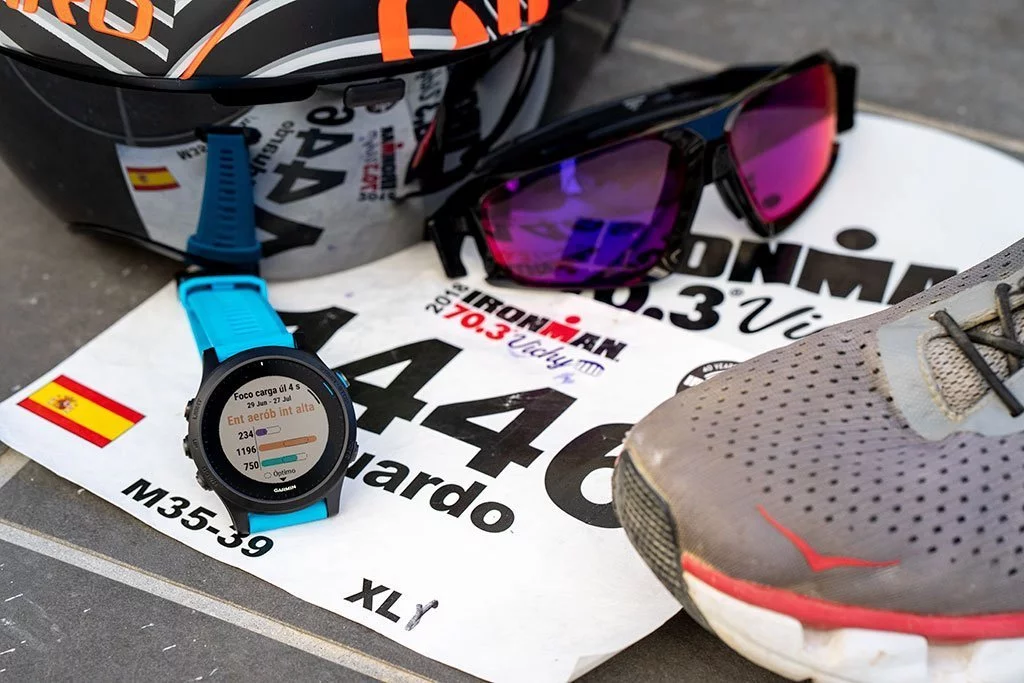
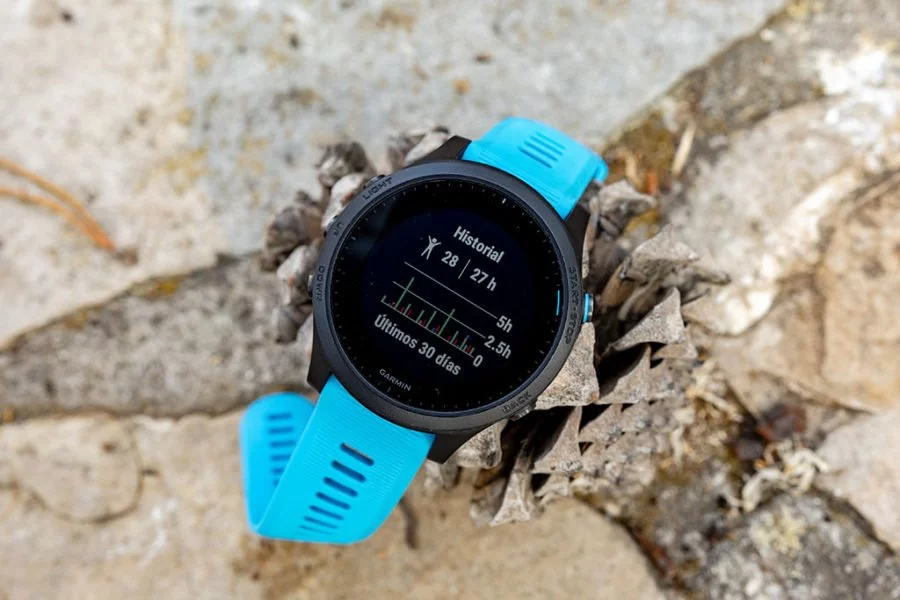

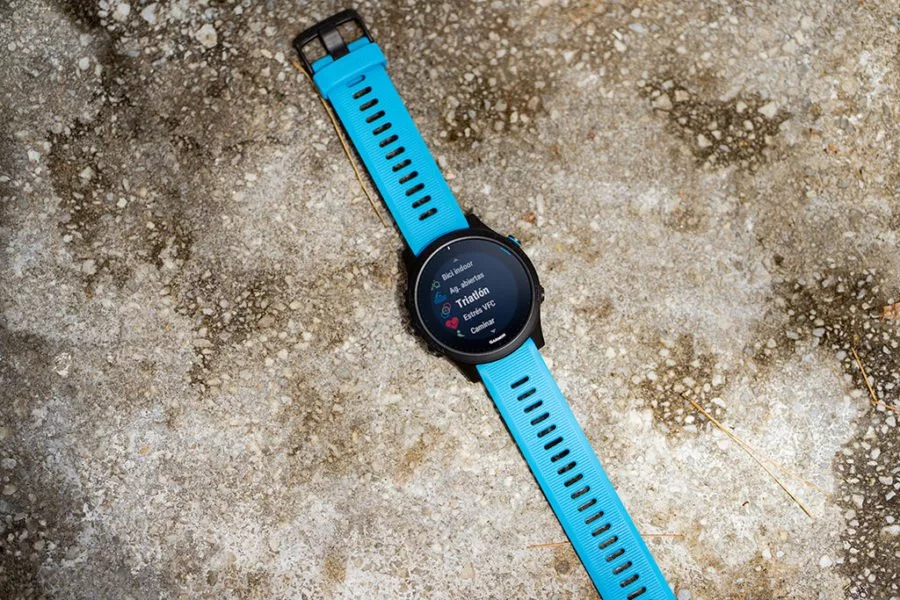

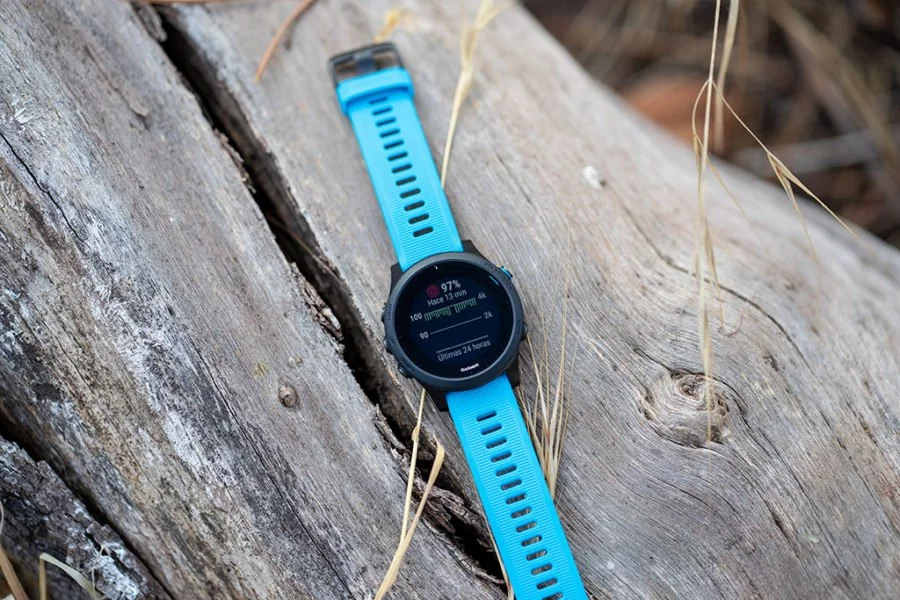
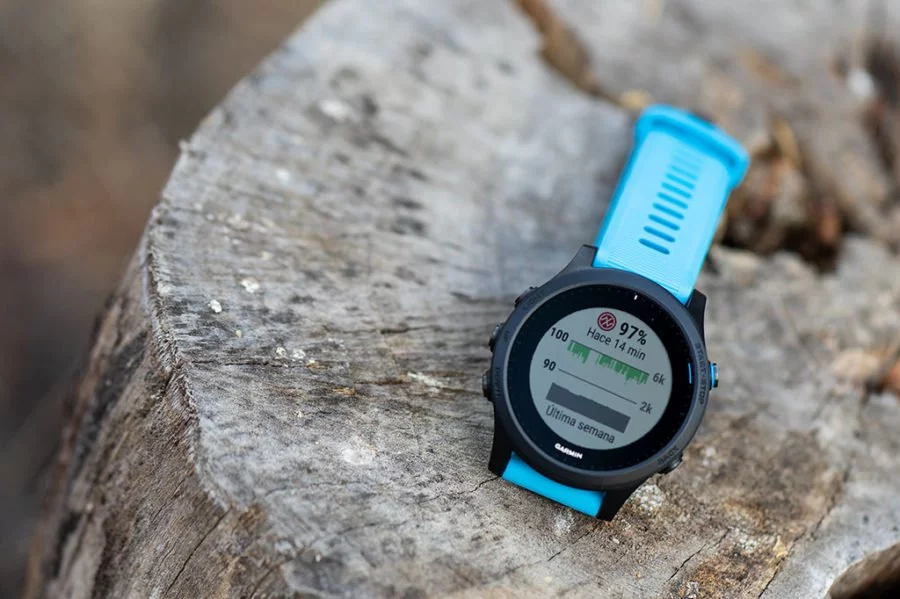
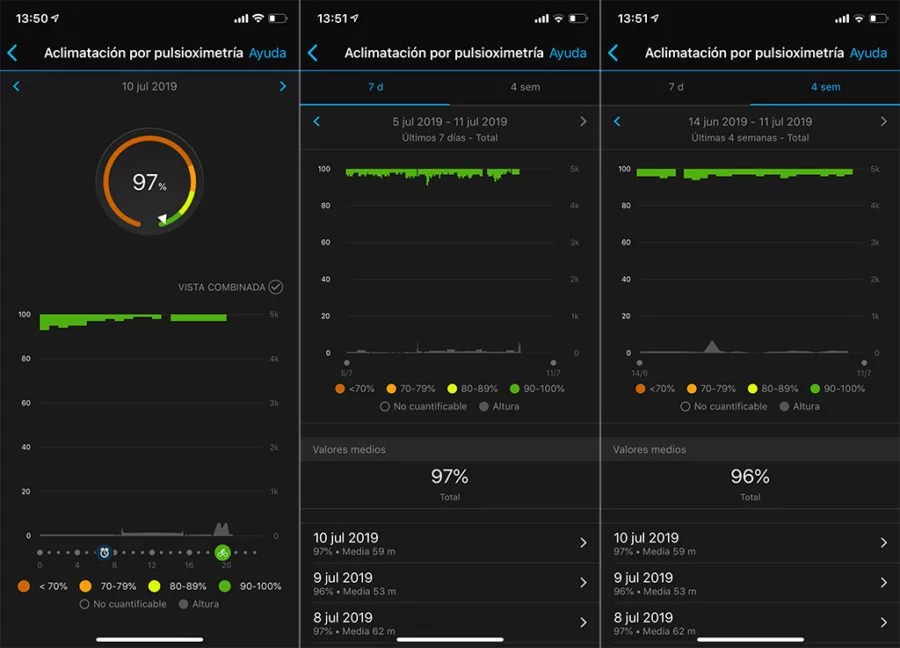
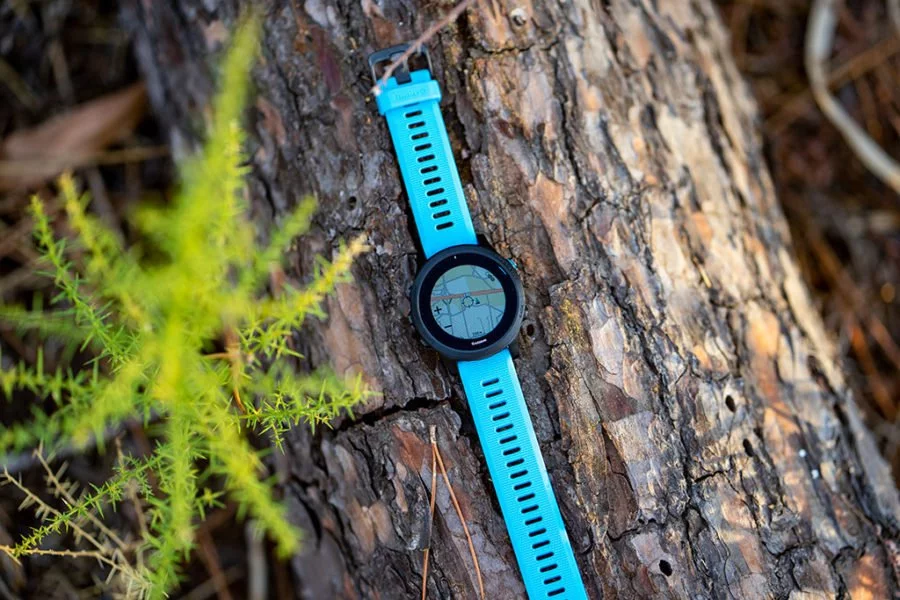

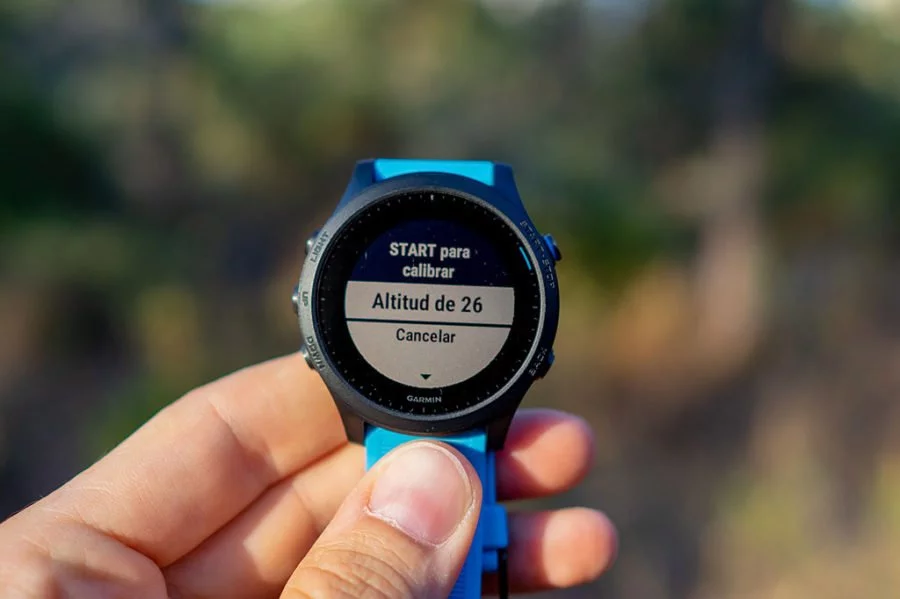
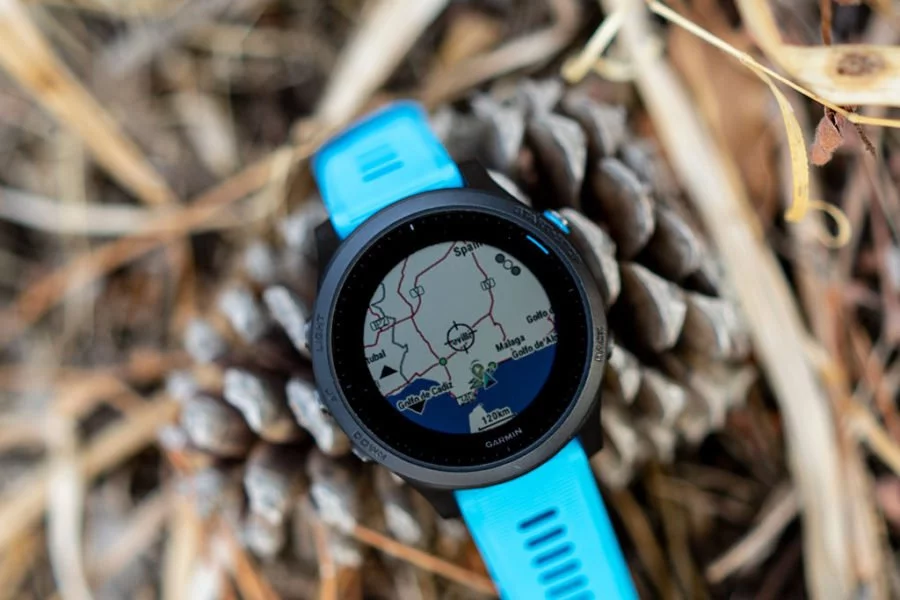
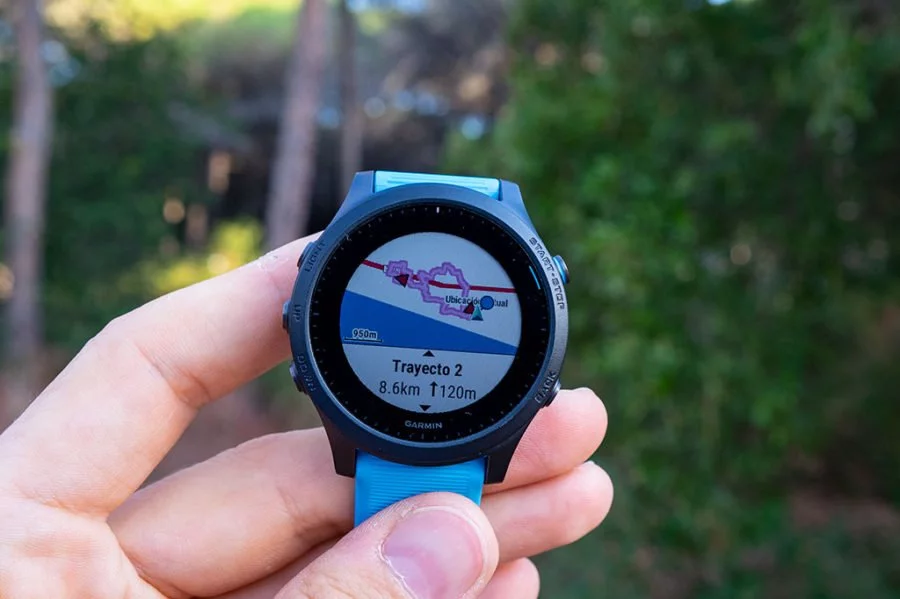
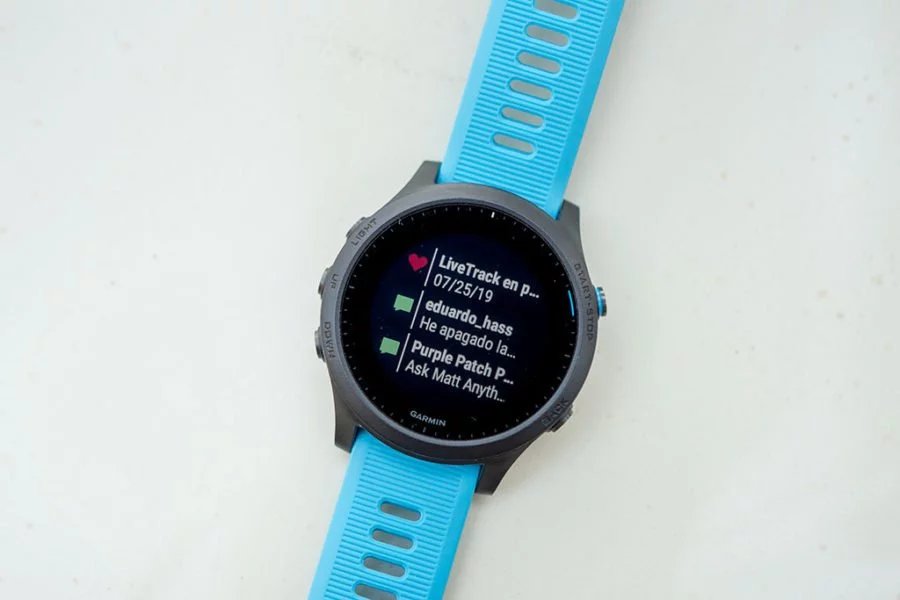
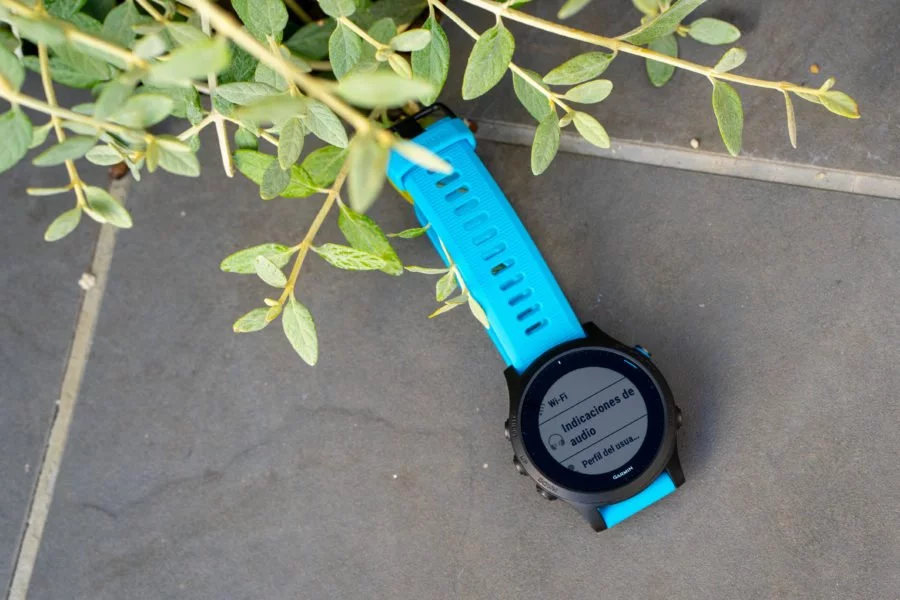
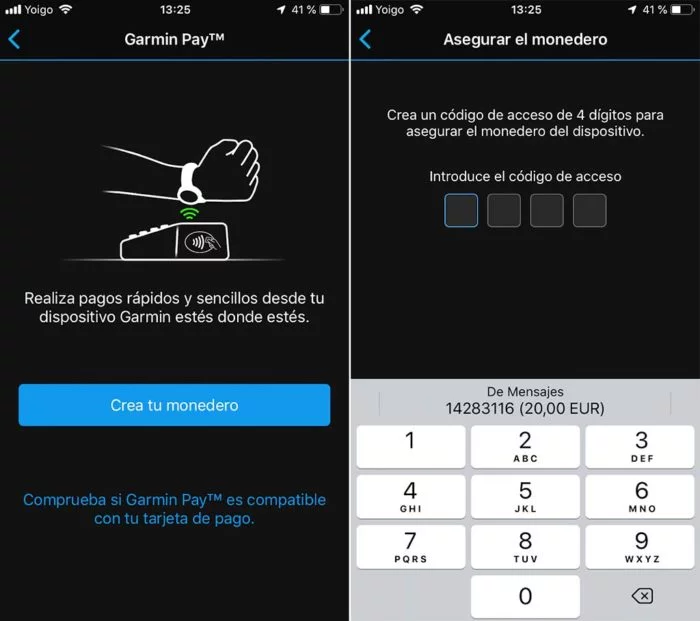
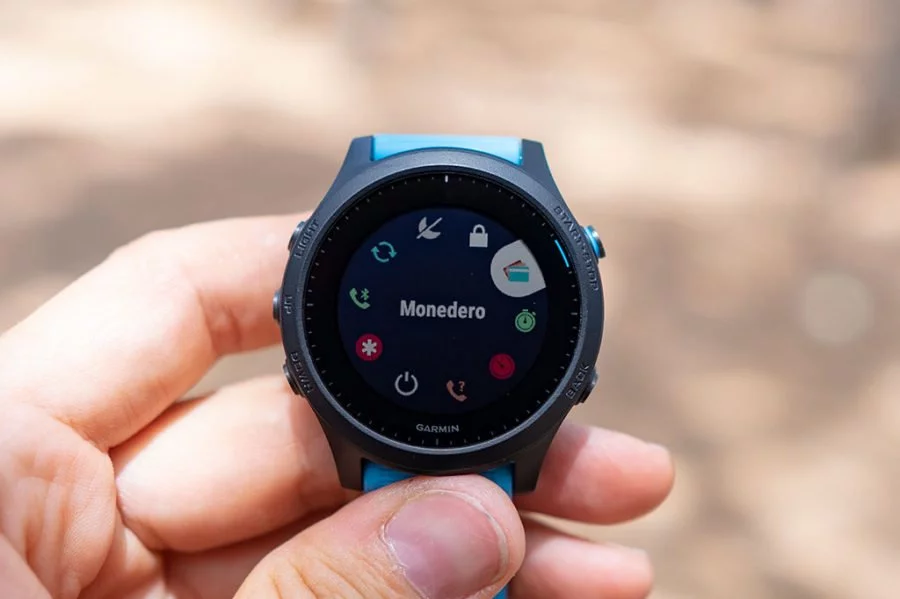
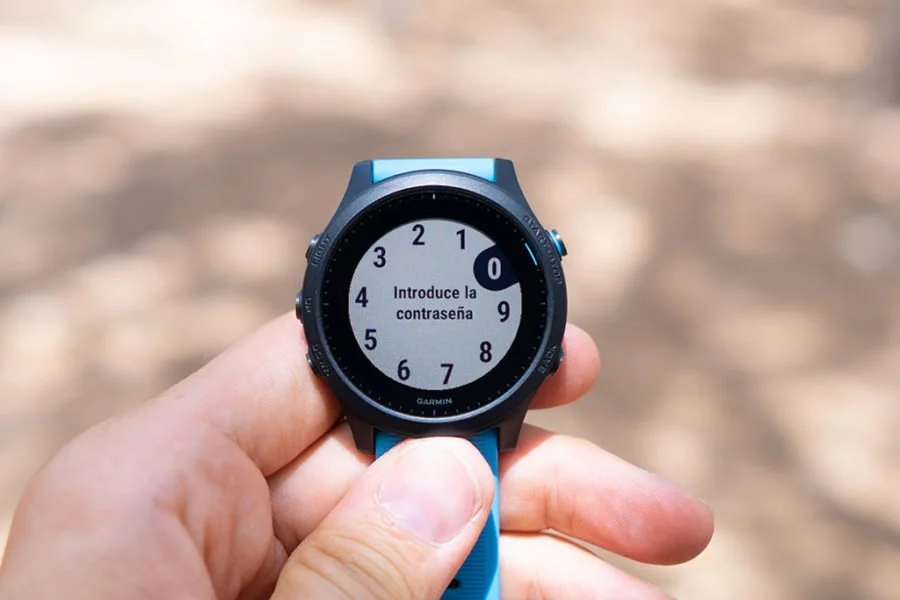
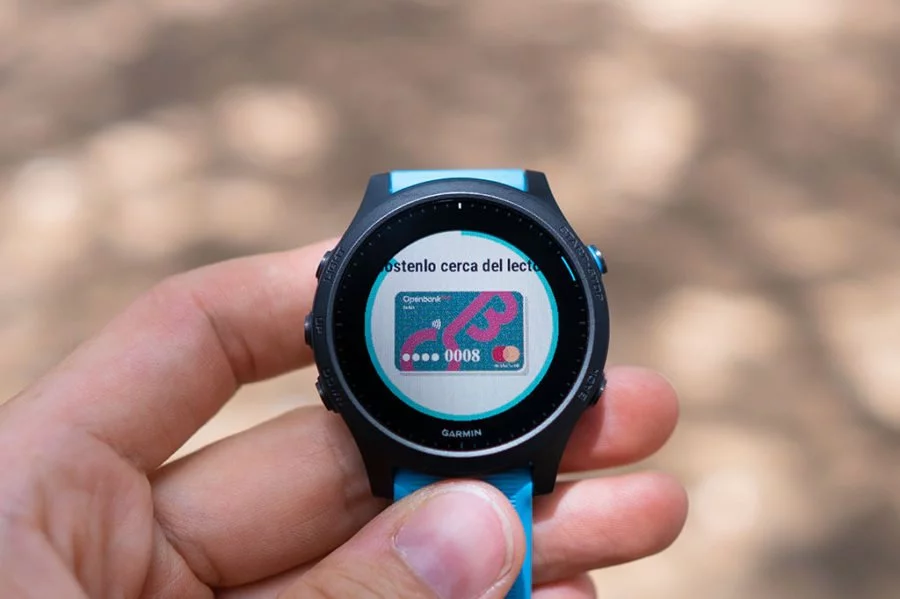
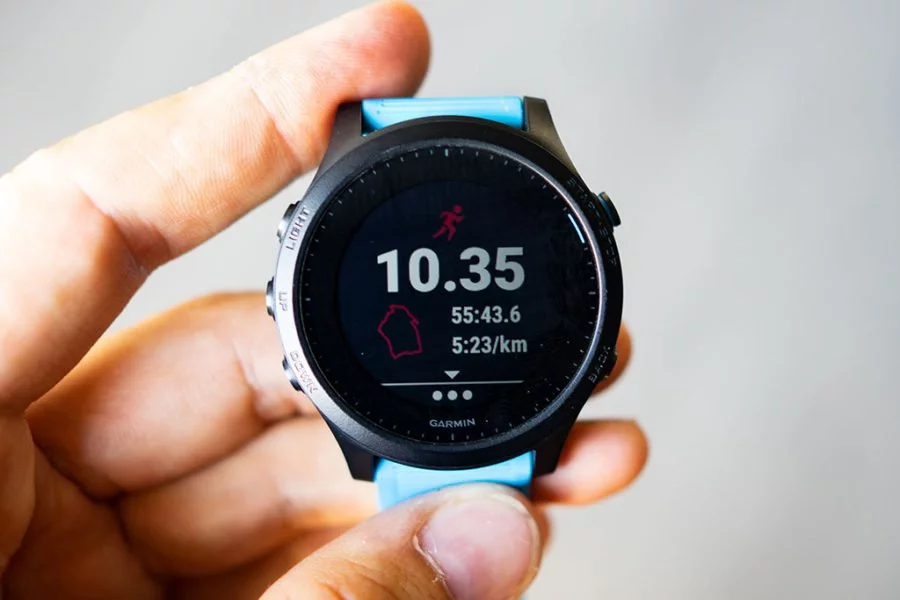
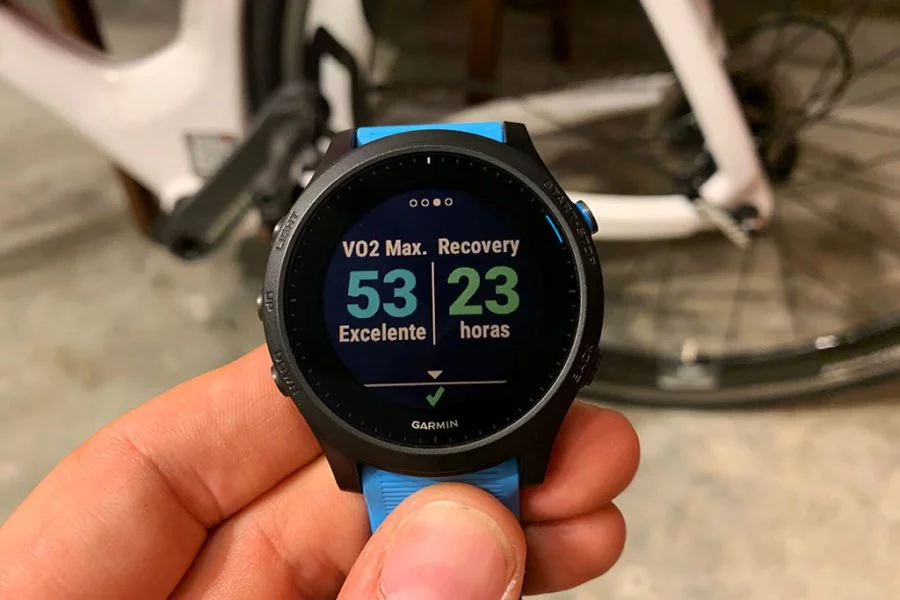
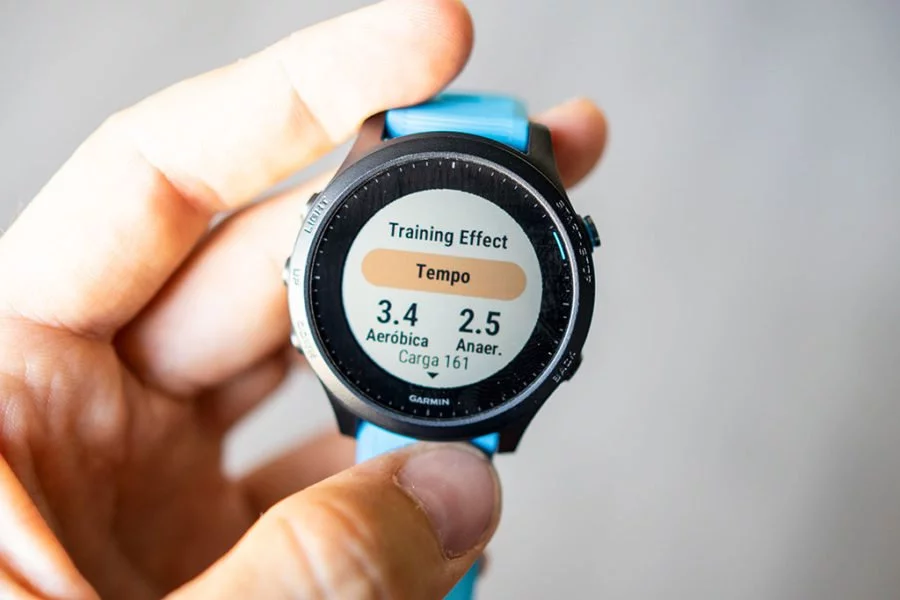
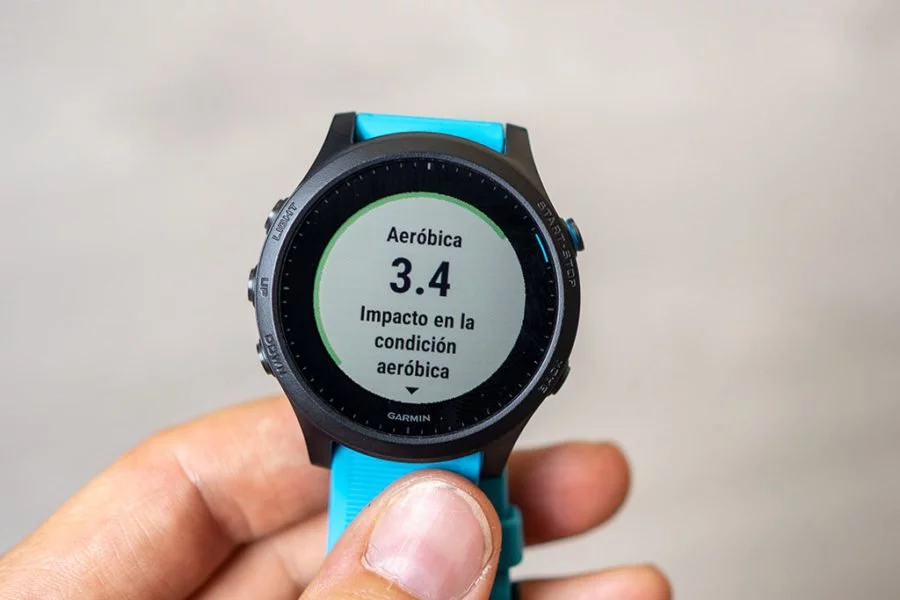
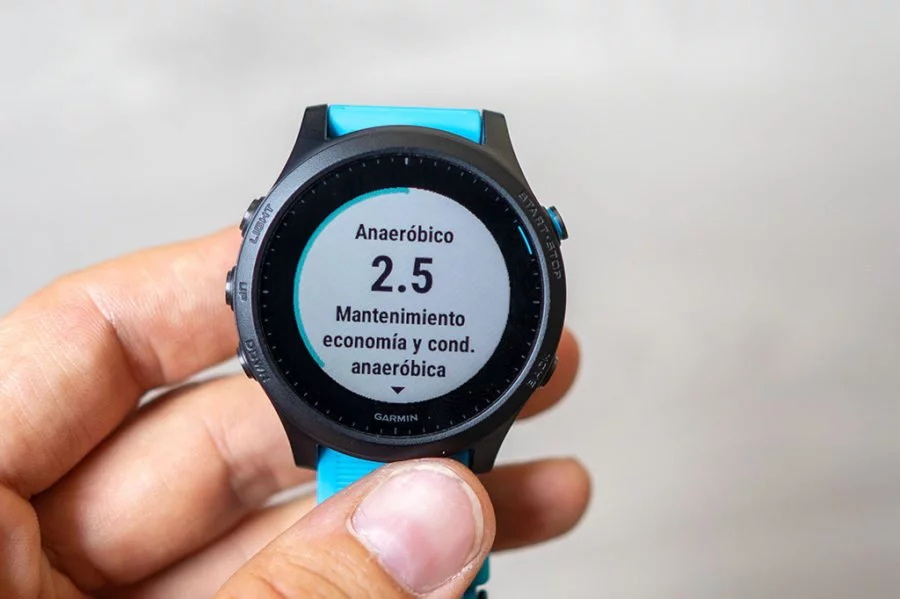

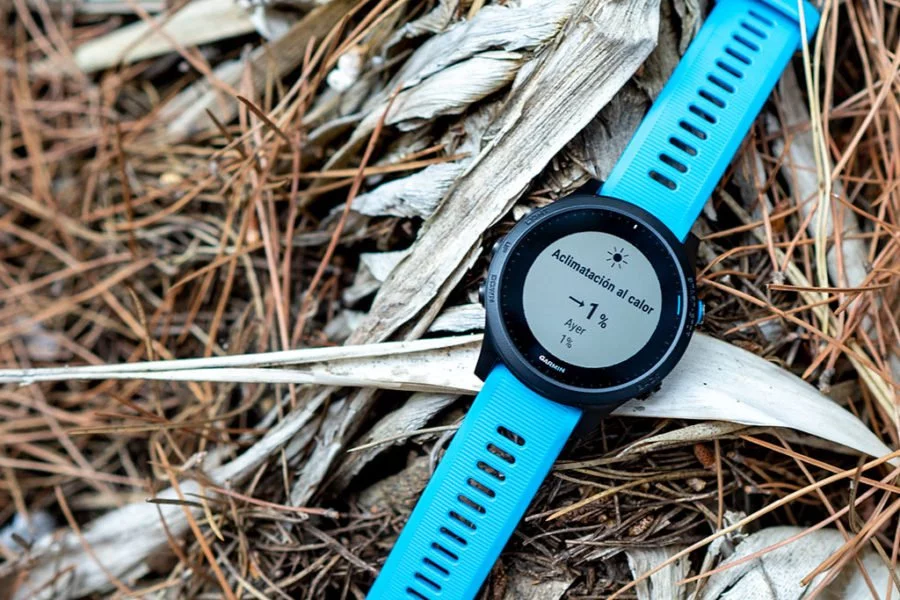
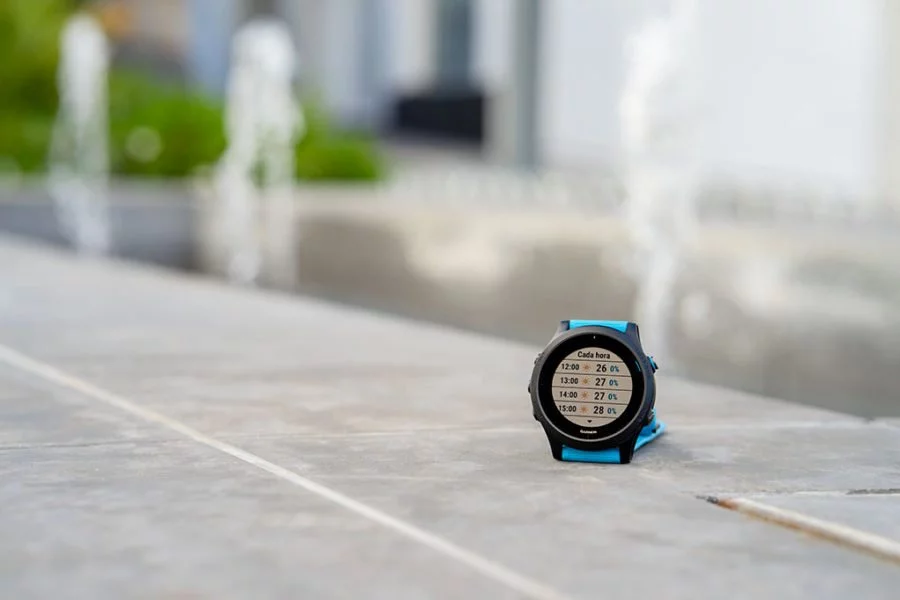
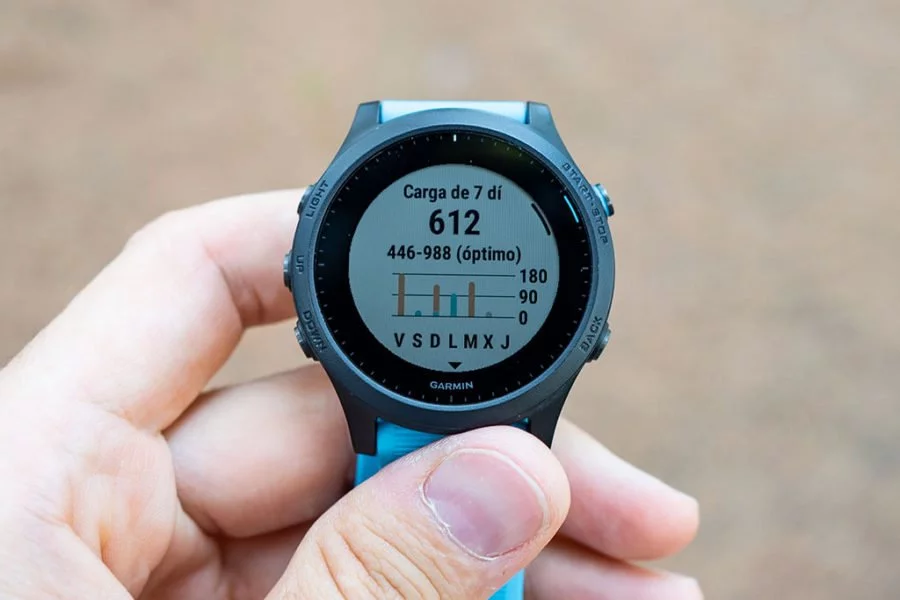
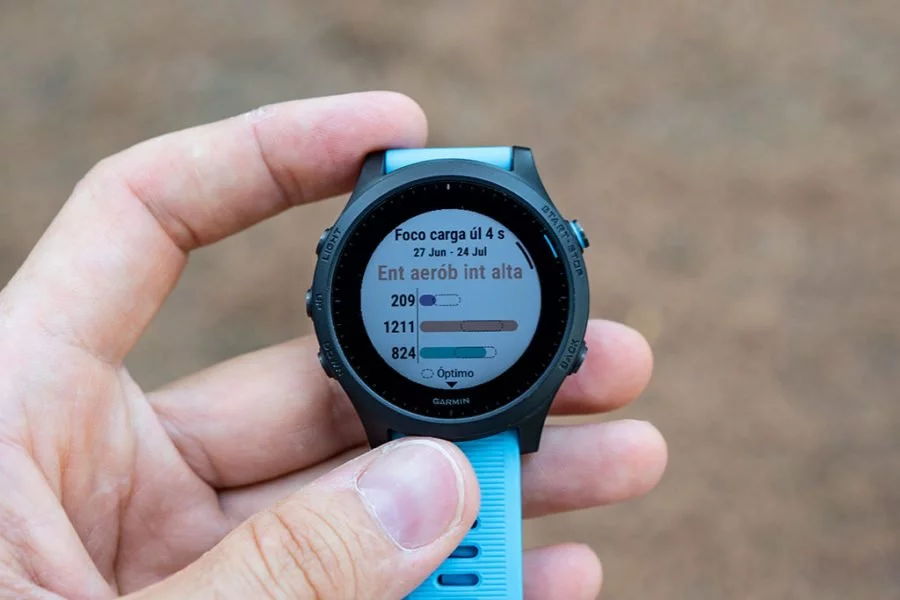
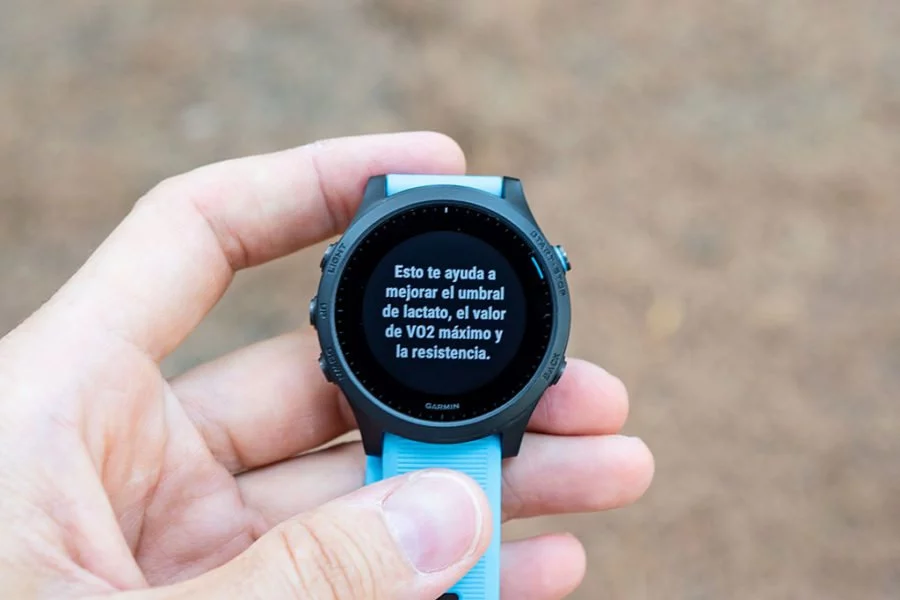
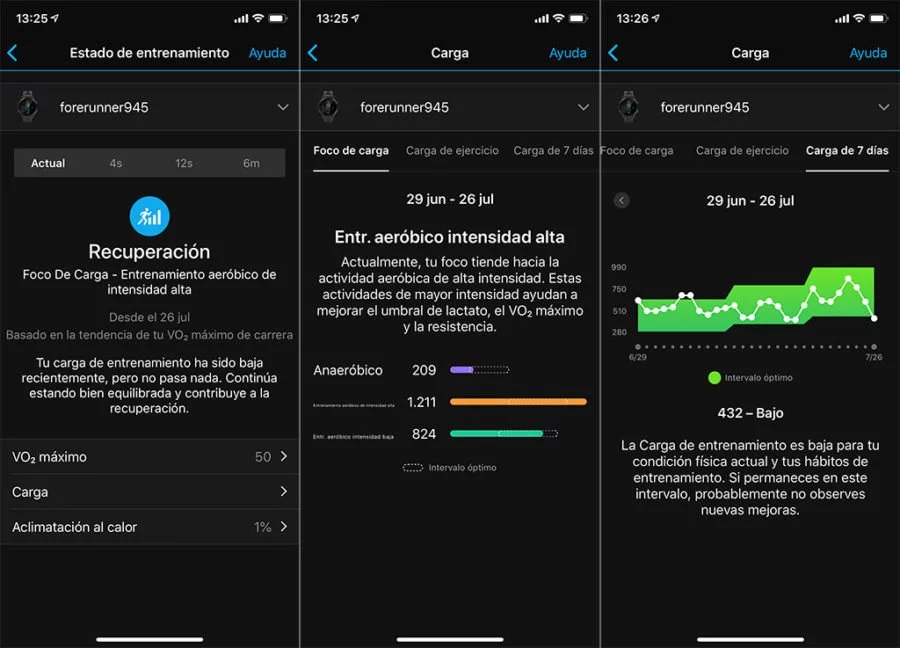
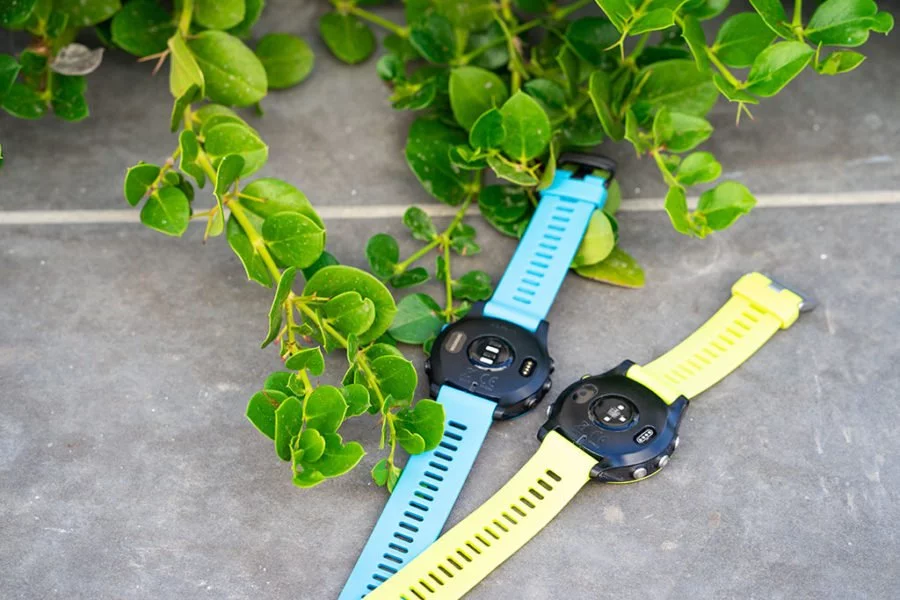










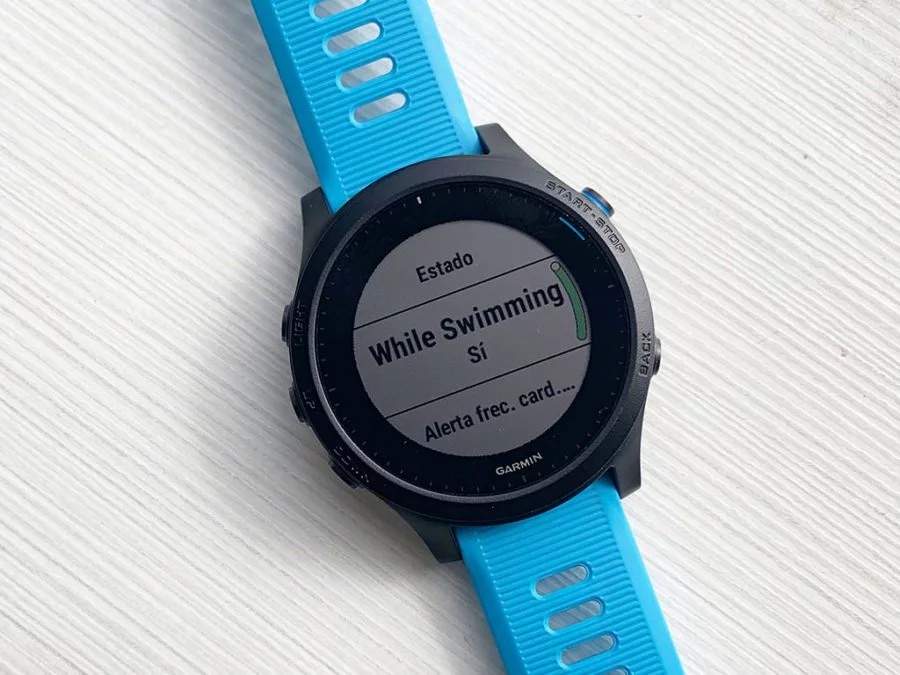


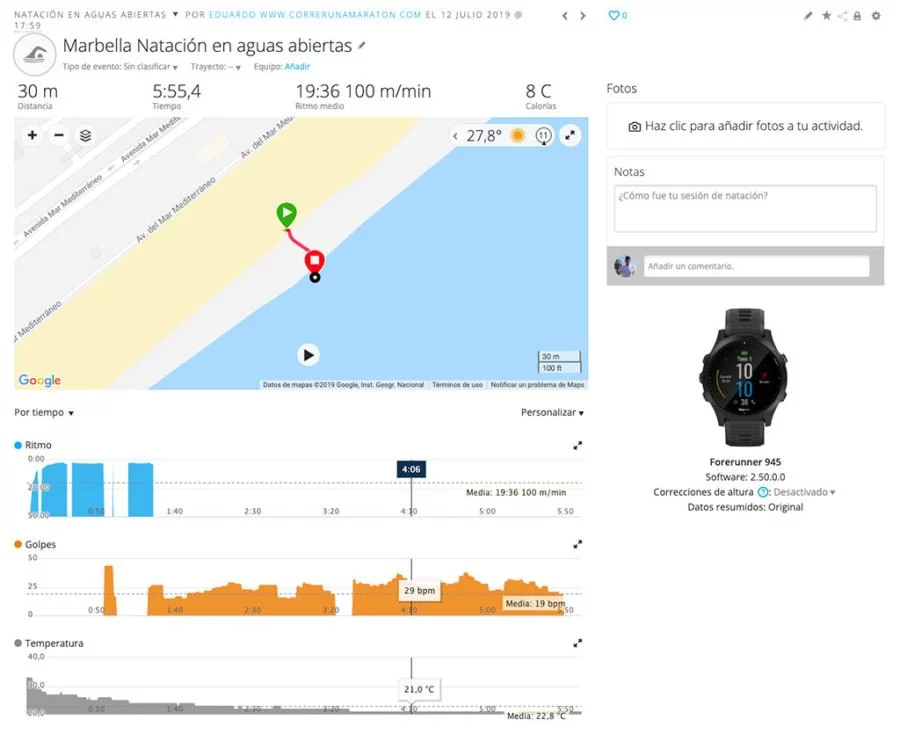
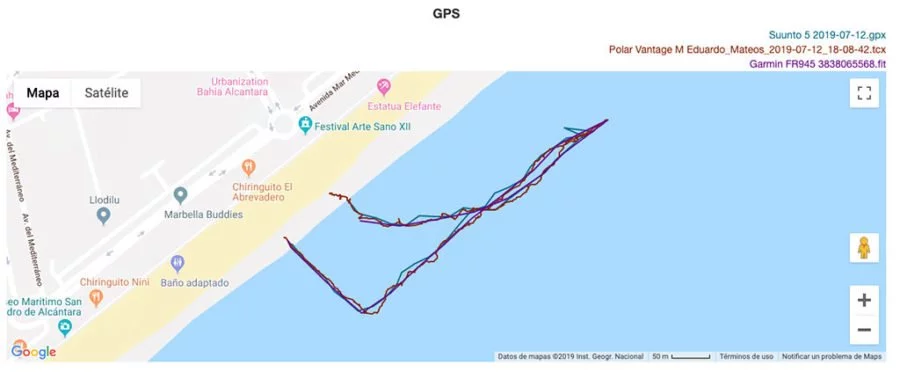
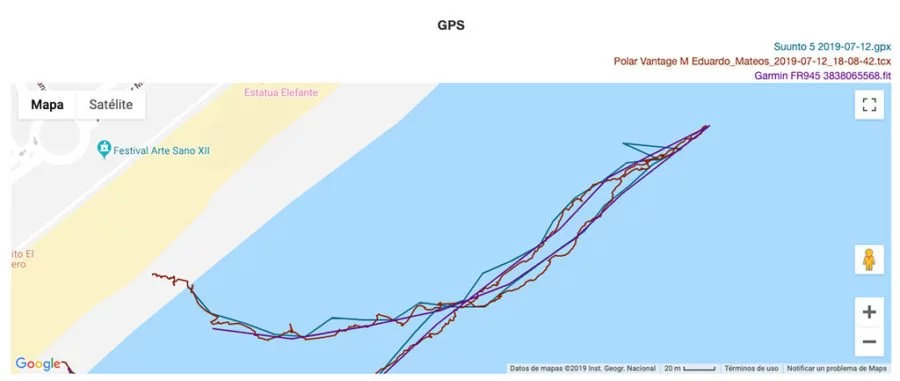
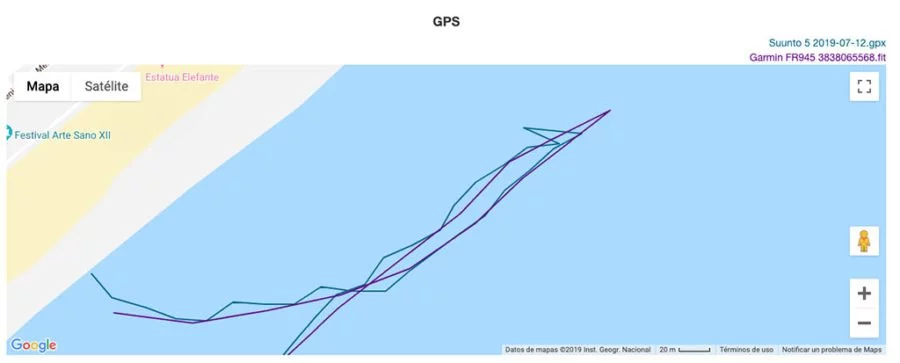




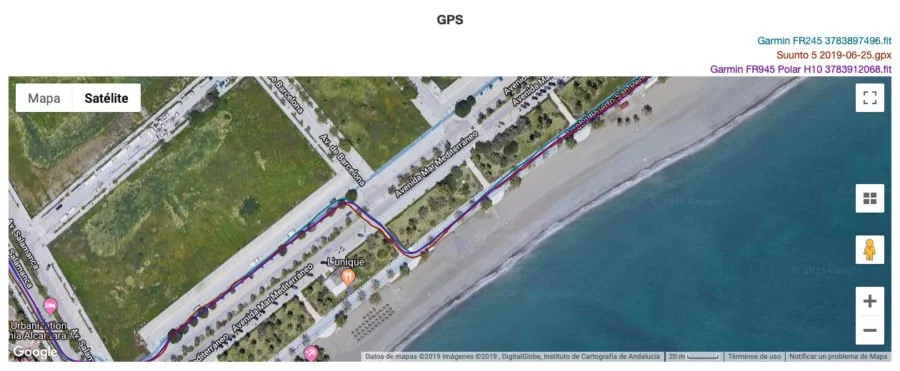
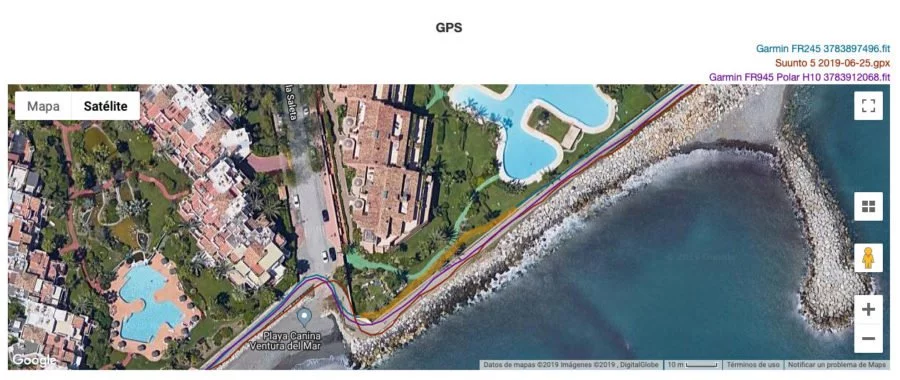

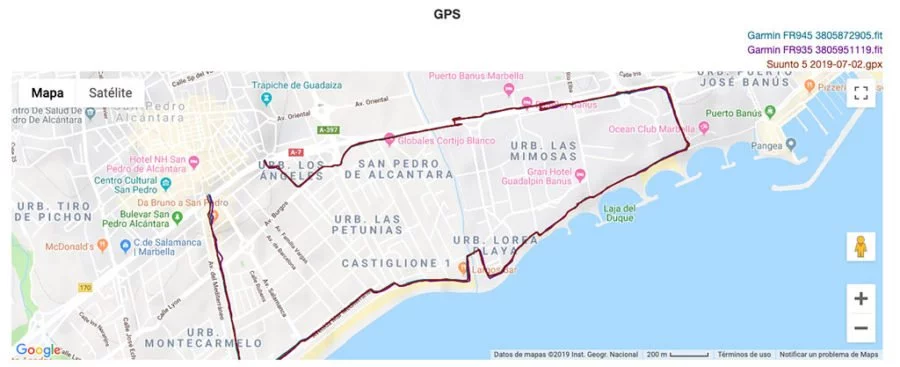
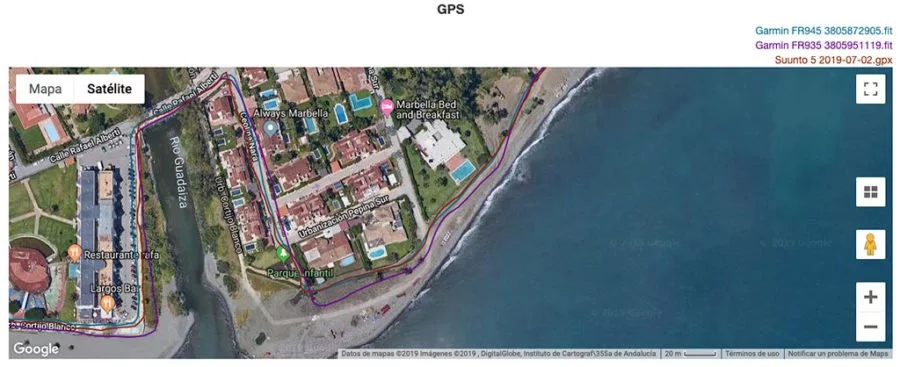
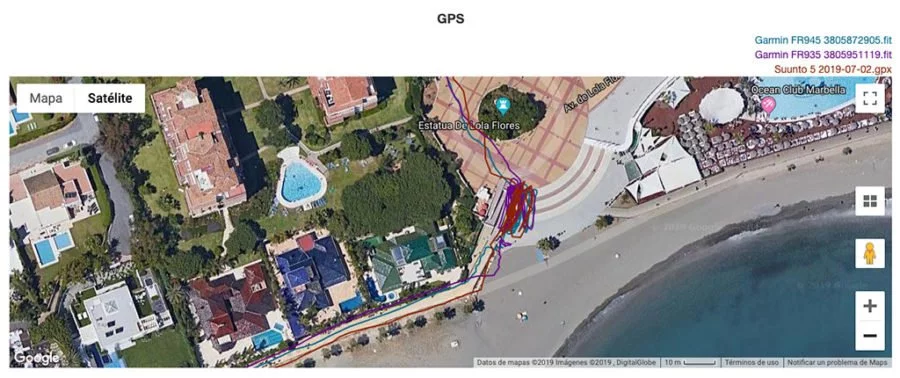
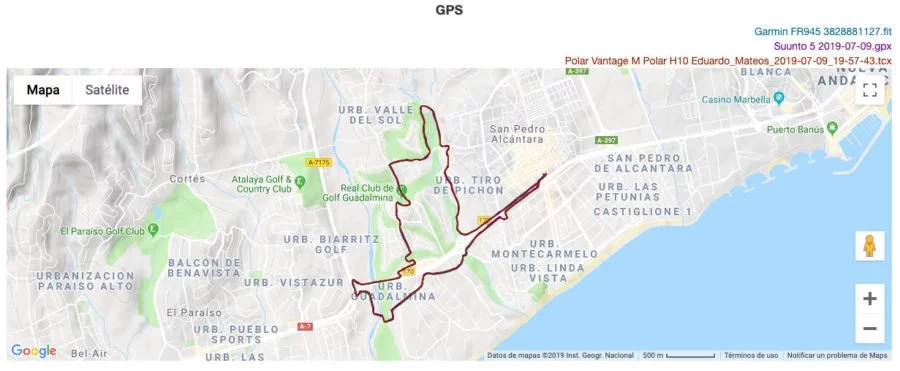
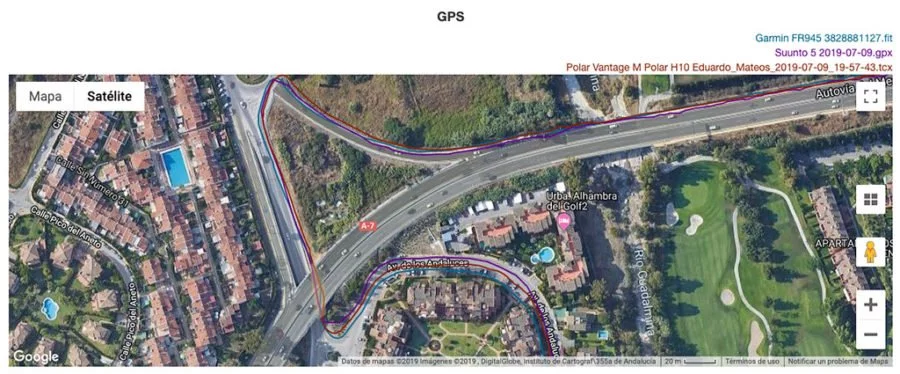
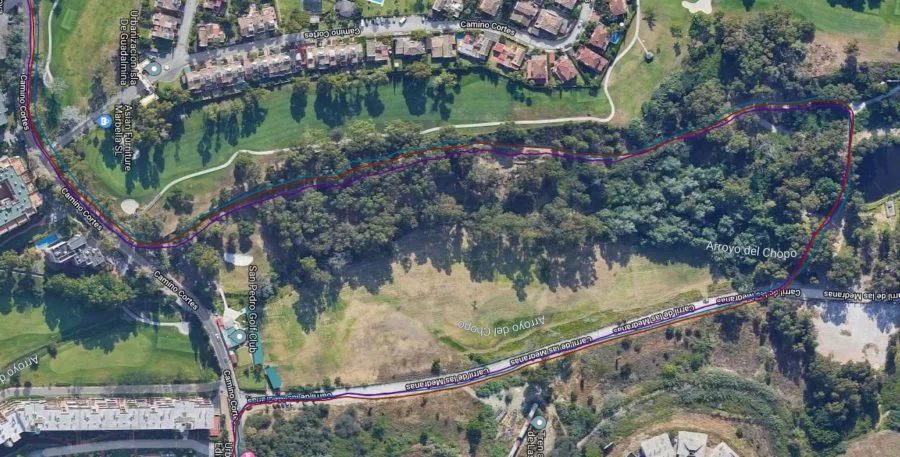
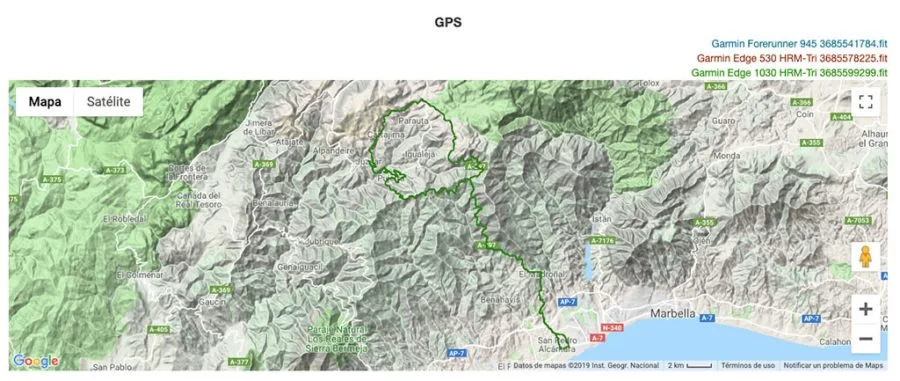
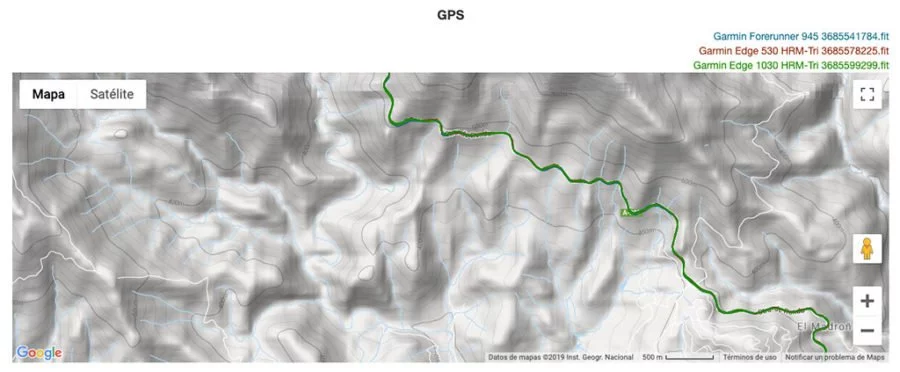
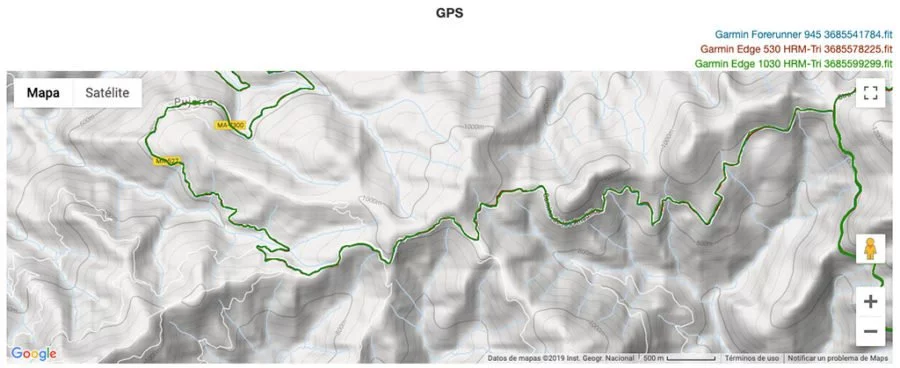
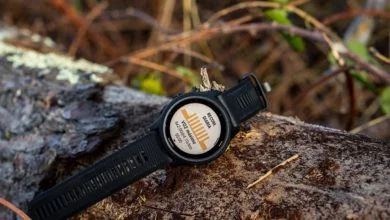
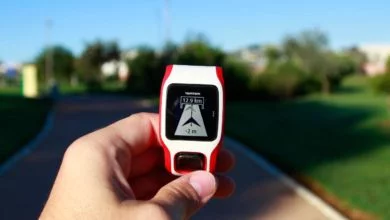
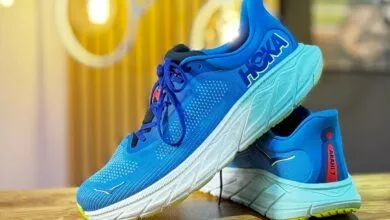
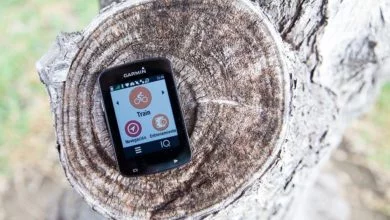
Excelente artículo para un reloj GPS que va a dar mucho de sí, te agradecezco estos artículos siempre de primera mano.
Gracias, y yo a vosotros os agradezco que lo leáis y lo compartáis 🙂
Pienso que si son muchas las características nuevas, no se que esperaban
Gracias por el articulo, esperando la respectiva prueba.
El 945 es más completo que el Fénix 5 plus? Además de incorporar el último modelo del chip
Gracias.Saludos
Sí, las nuevas funciones de las métricas de entrenamiento no están en el Fenix 5 plus.
Hola gracias por la info, excelente y muy buena como siempre. Una consulta sabes si está planeado en alguna gama agregar la posibilidad de entrar por potencia? Cómo agrego el polar?
Gracias Eduardo
Garmin tiene Running Power, aquí tienes todos los detalles.
Para mí que tengo el Fenix 5+, la gran incógnita es qué novedades de las que trae el 945 crees que se incorporarán al Fenix 5+ en futuras actualizaciones? (Aquellas que el hardware permita claro)
O esperará Garmin al Fenix 6? Que visto la renovación de su gama puede que no tarde tanto…
Como siempre muchas gracias por el artículo y por darnos tu opinión 😉
En principio Garmin no se ha pronunciado al respecto de incluir las nuevas métricas de FirstBeat, no tengo nada claro que vayan a llegar al Fenix 5 Plus
Hola,
Qué ventajas le ves al Fenix 5 plus respecto a este 945 (quizás capacidad de almacenaje mayor en el Fenix?) es decir, según lo leído, aparte de los materiales el F5+ es inferior en todo, batería, funciones, más peso….y el 945 incluye el nuevo sensor ELEVATE.
Tengo el F5+ y estoy pensando en pasarme a el 945, más ligero y con más funciones…
Un saludo y gracias!!
Lo único es en cuanto a calidad de materiales. Tanto en software como en hardware actualizado el Forerunner 945 es superior al Fenix 5 Plus. Prácticamente se trata de un MARQ Athlete de plástico.
Muchas gracias por tu respuesta.Te lo preguntaba porque tengo un Fénix 3 y me estaba planteando un cambio.Estoy muy contento con el Fénix pero como todo en la vida hay que ir renovando. Esperaré un poco a ver cómo funciona el pulso hr y las distintas métricas.Espero que pronto hagas una valoración.Muchas gracias.
Ahora toca decidir si plástico o metal o priorizar software y hardware
Que tal va ese chip GPS? Es más preciso que el del Fenix 5x? Estoy pensando en cambiarlo, gracias y un saludo
Tanto Suunto como Polar siguen trabajando para mejorar resultados. Polar ha lanzado una actualización recientemente y parece que mejora lo que tenían con anterioridad, pero todavía tienen que seguir «explorando». En cuanto al Garmin, hay que esperar a que lo pueda probar con tranquilidad.
Hola, muy bien articulo!!
Hago triatlones de media y larga distancia. Sigo los entrenamientos de un preparador, en bici voy por potencia y en carrera por pulsaciones. Actualmente tengo el 920xt. Crees que tanto con el 935 como con el 945 me podría olvidar de la banda y guiarme por las pulsaciones de la muñeca o debería seguir manteniendo la banda?
Muchas gracias,
La banda te va a seguir haciendo falta para salidas en bici, al igual que para entrenamientos de cambios de intensidad o series. Para rodajes a ritmo constante en la mayoría de ocasiones el sensor óptico trabaja bien.
Gracias por el análisis… Muchas ganas de sustituir mi 935 por el 945, pero habrá que esperar unos años más!
Grandísimo análisis como siempre. Muchas gracias
Eduardo has comentado que dependiendo donde compras el reloj, viene una configuración de mapas distinta. Mi pregunta es si el reloj se compra en USA, y se usa en España, es posible cambiar las configuración de los mapas?..
gracias. Magnífico articulo.
Saludos
No, tendrías que comprarlos. Acabo de mirar y el de España (sólo España) sería $149
https://buy.garmin.com/es-ES/ES/p/564705
Muy buenas Eduardo.
Lo primero, felicidades por la review, muy completa y esclarecedora.
Sin embargo, ya que es una duda muy concreta, te planteo la cuestión que puede decidir si adquirir el 945 o no.
Señalar que mi actividad deportiva es también mi actividad profesional. En la actualidad tengo el Garmin 235 y en prestaciones estoy en general contento, excepto que que la medición del pulso es absolutamente deficiente (probado en todas las posiciones de la muñeca y con diferentes niveles de presión). Como ejemplo, en un entrenamiento de series me marca un pulso máximo 110. Mi entrenador me hace las mediciones puntuales pero ya se ha puesto serio y me pide un pulso constante que sea al menos creíble.
Mi duda es, ¿mejorará mi medición con el GFR945?
Eduardo, hablas de mejoras en la batería respecto al 935/Fenix 5, pero no veo ninguna prueba donde aclares datos.
Hablamos de 5h, 10h… Tengo un 935 que uso a diario en modo exclusivo reloj/pulsómetro y si le gano una semana de autonomía + Garmin Pay y música, ya justificaría la update L 945.
Gracias
Ya no puedo hacer pruebas de autonomía como antiguamente, salvo que me pase más de 24 horas de entrenamiento… lo cual no entra en los planes. Ahora los relojes detectan cuándo no lo llevas puesto y reducen su consumo, apagan el sensor, etc.
Al final no puedo hacer más que remitirme a los datos de la marca. Que por otra parte, siempre han coincidido con los reales cuando he podido realizar pruebas de autonomía.
Hola Eduardo,
En primer lugar, agradecerte este excelente análisis, como todos los que haces.
Viendo las valoraciones, veo que en funcionamiento global le has puesto un 8. Ya sé que es una puntuación «subjetiva», pero me parece baja en comparación con el F5+ o el FR245, que tenían 9. Al ser un reloj tan bueno, me esperaba una valoración superior…
Al 945 le ha pesado mucho el fallo de la natación en aguas abiertas. Como decía en la prueba, en un reloj de triatlón es imperdonable que en ocasiones te puedas quedar sin datos durante uno de los deportes principales.
Hola Eduardo, no se si has podido probarlo. Tengo el 935 pack tri, ¿es posible usar el 945 en el «Kit de desmontaje rápido» del 935, o tienes que comprar el pack tri del 945?
Físicamente ambos relojes son exactamente iguales. El pack tri de hecho es el mismo en ambos casos. También te digo que si te gusta el acabado en color azul, puedes comprar el pack tri y vendiendo los sensores recuperas la diferencia de precio (y más…).
Cual es tu opinión sobre potencia en carrera a pie? Crees que garmin lo metera de série como polar o hay que tirar de stryd por ahora? O hay algún otro modo?
Un saludo
Comentar que salseo mucho la web, sigue así .
Pues mi opinión la tienes bastante resumida en la prueba del Polar Vantage V: https://www.correrunamaraton.com/polar-vantage-m-vantage-v-review/#Medicioacuten_y_entrenamiento_por_potencia_exclusivo_Polar_Vantage_V
No creo que Garmin de momento se vaya a preocupar demasiado por la potencia en carrera. De haber pensado que es un segmento interesante para los clientes ya lo hubiesen hecho, o al menos darle soporte de forma nativa. En definitiva, saben perfectamente cuántos usuarios están usando actualmente la potencia (por la sincronización de actividades, por las descargas de aplicaciones, etc).
Pues el tema de la potencia no es para nada algo a desdeñar. Y que no den soporte de manera nativa me parece un error por parte de Garmin. El uso a través de aplicaciones es demasiado limitado. No es digno del profundo análisis del entrenamiento del que Garmin siempre ha hecho gala. Mal por Garmin en este aspecto.
Enhorabuena por el artículo, muy completo y además me ha acabado de convencer para adquirir el 945, ya que acaba de morir mi Fenix 3 tras cuatro años de uso.
Por cierto, también me ha gustado ver por tus notificaciones que eres usuario de Home Assistant como yo!! ;-)) HA también es una pasada, incluso más que el 945. ;-))
Muchas gracias jolaca.
Me has pillado, 😉
Buenas!! Hago triatlón y se me acaba de estropear el 735, vale la pena el 945 o mejor aprovecho alguna oferta del 935, o incluso de nuevo el 735? Gracias
Muy buenas Eduardo.
Lo primero, felicidades por la review, muy completa y esclarecedora.
Sin embargo, ya que es una duda muy concreta, te planteo la cuestión que puede decidir si adquirir el 945 o no.
Señalar que mi actividad deportiva es también mi actividad profesional. En la actualidad tengo el Garmin 235 y en prestaciones estoy en general contento, excepto que que la medición del pulso es absolutamente deficiente (probado en todas las posiciones de la muñeca y con diferentes niveles de presión). Como ejemplo, en un entrenamiento de series me marca un pulso máximo 110. Mi entrenador me hace las mediciones puntuales pero ya se ha puesto serio y me pide un pulso constante que sea al menos creíble.
Mi duda es, ¿mejorará mi medición con el GFR945?
El sensor es algo superior, pero aún así para trabajo de series e intervalos vas a necesitar del sensor de pulso en el pecho sí o sí. Si ese te molesta siempre puedes optar por un sensor óptico externo, como el Polar OH1
Gracias por el artículo. Tengo una consulta originada por la multitud de lesiones que estoy sufriendo en este ultimo año y que me llevan a pensar que estoy sobreentrenando.
Me gustaría saber que ofrece el 945 en este aspecto que sea novedoso con respecto a su antecesor el 935.
Muchas gracias por tu atención
Básicamente todo lo referente a las nuevas métricas de entrenamiento avanzadas que puedes ver en la prueba.
Hola Eduardo!
Hablando del polar oh1, con la beta 2.64, además de habilitar el pulsómetro de muñeca durante la natación, ¿sería posible usar la banda de brazo para usarla mientras nadas, «desechando» las mediciones de la muñeca y guardando en la actividad las pulsaciones registradas por el oh1? Porque éste es más fiable que el lector de muñeca.
Gracias!
No, pero no porque tenga que habilitarse algo en el reloj, sino porque aunque el OH1 dispone de memoria, no es compatible con la función de descarga de datos de los relojes de Garmin.
Buenas Eduardo,
Tengo un fenix 5 y estoy pensando en cambiarme a este. Me hecha para atrás el tema de aguas abiertas. Tu crees que ese bug se solucionará.
Un saludo
Hay una actualización de hace dos días para el chipset GNSS (https://forums.garmin.com/sports-fitness/running-multisport/f/forerunner-945/170689/gps-chipset-2-50-is-now-live-open-water-swim-improvements).
Aún no he tenido oportunidad de probarlo, pero no he visto malas opiniones
Buenas tardes.
Tuve un Garmin fr 620 que jubilé prematuramente pues con su escaso contraste apenas veía los datos. Sobre todo en el atardecer y senderos boscosos. Ahora me apaño con un fr35 pero encuentro en falta datos.
Dudo entre el fr945 y el vantage V. Para funciones creo escogería el 945, además que ya conozco el sistema Garmin, pero a mis 54 años
y visión sacrificoo funciones a favor de un buen contraste. ?Cuál creeís que ofrece mejor legibilidad?
Animos con la web Eduardo.
Saludos
Creo que con el FR945 vas a tener mejor contraste y visibilidad, especialmente con oscuridad donde el Vantage V no destaca precisamente.
Felicidades por tus analisis, son francamente buenos. Como usuario de un Fenix 5 tengo una duda ya que llevo configuracion GPS+Galileo.
En este analisis hablas de que la eficacia de Garmin con Galileo aun no esta muy pulida. ¿Entonces recomiendas que en mi Fenix 5 use GPS+Glonass?
Es diferente. En el 945 el problema es que el chipset es nuevo (que ya ha recibido una actualización), por lo que no aplica al Fenix 5.
¡Hola! Me encantaría que hiciera un análisis y comparativa entre como trabajan, funcionan y son la carga de entrenamiento que tienen Garmin y Polar (Training Load PRO). Que te muestra cada una, que significan, cual crees que lo hace mejor…si son útiles cuando te dicen que descanses….
Hola Eduardo, cuando pruebes la actualización para el chipset o lo sepas por algún otro medio, ¿podras confirmarnos si se ha solucionado el problema en aguas abiertas del 945? Muchas gracias y enhorabuena por tu análisis.
He hecho algo de aguas abiertas este verano y he tenido buen resultado, no se me ha vuelto a cortar ningún entrenamiento. Revisando en los foros de Garmin también parece que han desaparecido todos los temas en los que se reportaban problemas (no por borrados, sino porque no se han vuelto a actualizar), por lo que parece que ya es algo que haya visto solución.
Hola Eduardo,
Vengo de un F935 y con anterioridad un Fenix 3.
Aunque el uso es a diario como reloj, tambien saco datos en salidas por el campo, MTB y esquiadas.
En uso 100% reloj, he notado que la batería me dura una semana menos que la del 945, eso es un 30-35% de diferencia a la baja, cuando debería ser al contrario, por mucho nuevo chip de Sony que tenga.
Mismos sensores en uso, nada de wifi ni bluetooth, ni notificaciones, sensor pulsoxiometría desactivado, etc..
Has notado realmente una mejora en la duración? En mi caso, al contrario.
Todo alcualizado a la última versión de firmware
Ten en cuenta que el chipset de Sony a lo que afecta es al uso de satélites. No interfiere en nada en el uso exclusivo de reloj.
Haciendo entrenamientos frecuentes (que no es el caso ahora, porque estoy en pretemporada) sí he notado esa duración extra. Y más que duración extra lo que noto es que entre entrenamiento y entrenamiento la batería baja menos cantidad.
Eso sí, hace tiempo que no utilizo el FR945 a diario (y el FR935 lo uso todavía menos), por lo que no sé cómo ha podido afectar las últimas actualizaciones de firmware al reloj. Pero leyendo en los foros de Garmin el consenso general es que con la 3.30 la situación ha mejorado.
pedazo de articulazo!!… enhorabuena!!. estoy que me quiero comprar uno y la oferta de webs con casi 100€ mas barato que en webs tradicionales (amazon, wiggle, etc) me echa para atrás… que diferencia hay?, he oido que la garantia no es la misma, que los mapas no son compatibles (asiaticos con europeos o americanos). total, indeciso de ahorrarme 100€ y que luego esté en chino. alguna idea?.
muchas gracias y enhorabuena por el articulazo.
Gracias Alfredo
Todas las páginas que lo tienen más barato (que tiene menor precio simplemente porque no tiene IVA y no paga impuestos…) tipo eBay, eGlobal Central, etc. son asiáticas. No tienen garantía, sólo un año a través del vendedor y teniendo que enviarlo, con cargo tuyo, de vuelta a China.
Además como indicas la probabilidad de que te envíen un reloj que no sea del mercado europeo es muy alta, por lo que no tendrías los mapas correctos. Y por último, si el envío se hace desde China tienes una probabilidad muy alta de que paren el paquete en aduanas y pagues impuestos (IVA + aranceles + gastos de gestión), por lo que te va a terminar saliendo más caro que comprarlo en Europa.
En definitiva, yo no lo haría.
Ahora mismo donde más barato se encuentra es en Wiggle, dentro de vendedores fiables y de tener acceso a la garantía en España. Y recuerda, si compras a través de los enlaces de la página estarás ayudando a mi trabajo.
¿Sintoniza la radio?
No
Hola Eduardo
Muy buen artículo. Practico running y natación en piscina,
Me interesa la cinta HRM run por las métricas que ofrece. .¿Cual sería la ventaja de comprar la TRI BUNDLE.
Gracias!
Aquí puedes encontrar los detalles de los sensores HRM-Tri y HRM-Swim: https://www.correrunamaraton.com/en/garmin-hrm-tri-hrm-swim-2/
Buenas,
tengo una pregunta, si tienes activado el sensor de pulso de la muñeca y vinculas un sensor con banda en el pecho, si haces una actividad por defecto que sensor es el que utiliza, la muñeca o el del pecho?
Hay que desactivar el de la muñeca para que tome los valores del sensor del pecho?
Muchas gracias de antemano.
Cuando el reloj detecta un sensor externo, utiliza éste y desactiva el sensor óptico
2009, compre mi primer Garmin 310, le gaste los botones y dijo basta. 2013, compre 910xt, gaste los botones y dijo basta, 2017, compre 920xt, durara tiempo todavia ….pero el 945 ya está en casa, eso de poser tener mapas en la muñeca siempre me ha maravillado.
Como veis, pro garmin, ya que tengo el conect desde entonces.
Me encanta leerte.
Un saludo
Estimado Eduardo, te escribo desde Córdoba, Argentina, excelentes todos los detalles. Leí las pruebas porque estoy interesado en adquirir el 945 por sus prestaciones y mejoras. Actualmente uso un Forerunner 235 y deja bastante que desear en la medición del pulso cardíaco en la muñeca.
Concretamente mi consulta es si la función de reproducir música puede funcionar simultáneamente cuando está activada la función de la actividad deportiva, por ejemplo rodar en bicicleta y escuchar música?
Aguardo tus valiosos aportes.
Sí, puedes utilizar la música mientras practicas cualquier tipo de deporte.
Hola, Eduardo.
Gracias a este excelente artículo (uno más), estaba pensando en cambiar de la serie Fénix a la Forerunner.
Ahora tengo un Fénix 3 y lo uso básicamente para triatlón, pues no hago salidas de montaña.
Puestos a renovarlo, no sé si ir por un Fénix 6 o un FR945 (o el 955), pues no tengo claras las diferencias entre una serie y otra.
Gracias.
Gracias Victor.
Si lo quieres para triatlón el 945 probablemente sea mejor opción aunque sea simplemente por peso y algo menor de grosor (a la hora de meterlo bajo el neopreno).
En prestaciones Fenix 6 Pro y FR945 están iguales, lo único que les diferencia es la pantalla más grande del Fenix y la función de configuración de uso de batería (y algunas funciones «outdoor» en cuanto a navegación).
Hola Eduardo, gracias por tu análisis, es genial.
Tengo dudas entre el fr245M y el fr945. Lo que me para es el precio. Corro maratones de asfalto y puntualmente quiero correr un par de trails al año. No sé si merece la pena para un par de trails al año.
Muchas gracias.
Dado que tu uso principal es el asfalto, con el FR245 sería más que suficiente. Sólo optaría por el 945 si de verdad piensas que vas a sacar provecho de sus funciones adicionales: métricas de carga de entrenamiento, información de altitud durante la ruta y navegación con mapas.
Si esos tres aspectos no te importan en exceso, yo no gastaría el dinero extra que necesitas por el 945.
Hola Eduardo,
Otra duda. Sabes si puedo ver la ruta y al mismo tiempo el perfil de altitud de carrera que estoy haciendo? Se puede ver tanto en el 245 como en el 945?
Muchas gracias!!
Sí, en el 945 al crear una ruta tendrás acceso al perfil de altitud, así como a las funciones de Climb Pro que te indicará el perfil de cada una de las subidas de las que conste la ruta. Sólo está disponible en el 945, la navegación del 245 sólo permite rutas.
Hola Eduardo,
Me estoy mirando este reloj. Yo vengo siempre de Polar y llevo toda la vida con ellos y contento con la marca. He trabajado con varios modelos. El polar Sport Tester PE 3000, el Polar S-120- El polar RCX-3, el polar M-430…..Todos me han durado muchos años. Pero ahora me gustaria que mi próximo reloj incorpore mapas, de ahi el motivo de mi cambio de marca. Pero tengo una duda. Solo dispongo de ordenador pc portatil y no tengo smatphone. Mi duda es si la applicación Garmin Connect i la Connect IQ se pueden utilizar indistintamente en movil o portatil. Es decir, podre sacarle todo el partido posible al reloj sin smatphone? Funcionan igual estas aplicaciones en un portátil que en un movil?
Gracias de antemano y animo por el gran trabajo que haces.
Gracias Jordi.
Sí, puedes hacer todo el uso, sincronización, aplicaciones, etc. con el ordenador sin necesitar de un smartphone para la sincronización. No tienes problema.
Échale un vistazo a la oferta de Wiggle que es lo más barato ahora mismo. O si quieres algo más barato, también tienes ofertas en el Fenix 5 Plus y otros modelos.
Hola, he enviado el 945 a garmin ya que no funciona correctamente en aguas abiertas y con la carrera a pie , los de garmin me lo devolvieron diciendo que ningun reloj da los datos exactos. y yo que me he comprado este reloj de 600€ pensando que para hacer los Tri, me estaria super bien. ya no se que hacer, mi reloj tiene solo 6 meses esta en garantia y me lo han devuelto igual, da los mismos errores en el mar y en la carrera a pie.
Asique dame consejo, que reloj puedo comprarme para hacer los Tri?
Gracias
Mery
me ha pasado lo mismo; pasé de 735xT al 945 pensando q iba a ser mejor, y en aguas abiertaqs es una patata, la medición y los ritmos se van a la m***. Y los del servicio técnico dice q ningún reloj mide lo mismo… eso está claro, pero diferencias de 350 metros en 2000 en aguas abiertas me parece excesivo. En fin… que para nadar en el mar voy a tener q seguir usando mi antigualla del 735
Hola! En mi caso que juego tenis, el 945 tampoco marca correctamente desde la muñeca, muy malos y erráticos los registros.
Saludos
Diego V
Hola Eduardo!!
Enhorabuena por la review. Estoy pensando en cambiar mi FR735XT y creo que por la diferencia de precio, vale la pena decantarse por el 945 en vez del 735XT. Mi duda viene si al adquirir este modelo, vale la pena seguir usando la banda HRM-Run en vez del sensor de pulso optico (que en el 735 no era muy fiable), y si usando la banda, dejaria de generar alguna métrica que el reloj ofrece sin necesidad de ella.
La verdad es que la banda TRI sube el reloj mucho de precio, y aunque practico variedad de deportes, estoy mas centrado y compitiendo en running
Saludos
Supongo que te refieres al 745 (y no al 735XT de nuevo).
A día de hoy sí, es más interesante el 945 porque cuestan lo mismo y tiene más prestaciones.
En cuanto al HRM-Run lo único que perderías es la memoria del sensor, cuyo uso es mayoritariamente para la natación. En todo lo demás y para entrenamientos y competiciones de carrera a pie, tendrás los mismos datos con cualquiera de los dos sensores.
Hola Eduardo,
Muchas gracias por tu análisis, nos es de gran ayuda, tengo un Suunto Ambit3 que ya reenquea y estoy mirando su sustituto, me gustan el Suunto 9 Baro, el,Spartan Sport Wrist HR Baro y de Garmin el forerunner945, siempre he llevado Suunto y estoy muy contento con la marca, pero el Garmin me esta ganando, practico regularmente ciclismo, carrera tanto asfalto como montaña, y nado cuando preparo algún triatlón de distancia olímpica, además de alguna caminata, por eso me gustaría tu consejo para tener mas idea.
Un saludo y gracias de antemano
Todo depende de la necesidad que tengas para los mapas para la navegación. Si vas a hacer muchas rutas, el 945 es claro ganador. Para triatlón te seguiría recomendando un Garmin (lo llevan mejor), pero si estás acostumbrado a Suunto es algo a su favor…
Lo que sí te diría es que vayas a por el Suunto 9 Baro, el Spartan Sport Wrist HR a día de hoy no merece la pena con respecto a su competencia.
Gracias por responder, cómo tengo la muñeca pequeña el 945 también es para mi un punto a su favor, y en cuanto ha resistencia de los materiales y pantalla, por los golpes y uso, cuál es más es resistente?
Salvo por el cristal de zafiro del Suunto 9 Baro (resiste arañazos mejor) no hay apenas diferencia entre ellos. Cualquiera se pondrá muy feo si lo «restriegas»
Muchas gracias
Buenas tardes,
Antes de nada quiero darte las gracias por el excelente análisis, ha sido el que me ha hecho despedirme de Polar y comprarme este Garmin.
Lo he comprado esta mañana y por ahora muy contento a excepción de una cosa, los botones. Tienen un tacto raro, a veces hacen click y otras no lo hacen (aunque no haga click el botón hace su función), otras veces es como un click doble, cuando lo pulso y cuando lo suelto, no se.. es algo muy aleatorio.
¿es normal? He estado mirando por internet y hay gente que se quejaba y al parecer Garmin reconoció los problemas y sustituyo relojes y tal, pero la cosa es que son mensajes en foros del 2019… entiendo que Garmin en pleno 2021 ya ha solucionado el problema.
En fin.. como te digo, los botones funciona pero es raro el tacto y claro… recién comprado ya me jode que esté defectuoso jaja.
Un saludo.
Sí, es un defecto conocido del 945. De hecho yo tengo que enviar el mío a garantía precisamente por los botones (comprado la misma semana de salida al mercado).
En principio ya debería estar resuelto el problema, pero si tu unidad lleva tiempo en almacenes, pues será de los que todavía tenían ese defecto.
Muchas gracias Eduardo por tu respuesta.
Pues finalmente consulte el problema donde lo compré (Decathlon) y me lo cambiaron por una unidad enviada directamente desde el almacén y la verdad es que perfecto, ya funciona bien.
Un saludo y enhorabuena por el blog.
Hola Eduardo,
tengo una duda de compra de cara al black friday (o a ofertas previas). Necesito un reloj GPS para una persona muy montañera que a día de hoy tiene un Fenix 3 pero que le funciona fatal ya. Mi idea inicial era el Fenix 5 Plus porque el Fenix 6 pro se me va de precio pero no sé si el Forerunner 945 podría llegar a ser una opción o por la diferencia de precio/antigüedad sigue siendo preferible el Fenix 5 plus.
Gracias de antemano!
A nivel de prestaciones el FR945 y el Fenix 6 Pro están casi totalmente a la par. La principal diferencia es la estética y algunas diferencias a nivel de navegación que no mucha gente va a utilizar.
De cara a Black Friday, son los Fenix 6 los que van a estar promocionados. El Fenix 5 Plus ya ha quedado atrás en la gama de Garmin, y el FR945 no suele tener demasiadas ofertas pues es un modelo que se vende bastante bien. Aunque quizás este año con la llegada del 945 LTE la situación cambie.
En cualquier caso, lo que te recomiendo es que estés atento a la web en esas fechas, pues publico siempre las mejores ofertas que hay.
Muy buenas Eduardo, estoy pensando en coger el fr945 o el Fénix 6x pro. El deporte q más práctico es el running y algo de montaña, lo q si q veo es q el Fénix es algo grande ¿ Es muy molesto cuando corres? Ya me dirás cuál prefieres. Muchas gracias de antemano
A favor del Fenix 6X
– pantalla más grande
– pequeñas opciones de navegación adicionales
– materiales y aspecto más “premium”
A favor del 945
– bastante más ligero
– mejor funcionamiento del sensor óptico
– más cómodo para llevar debajo de un neopreno
En lo demás son iguales. A mi personalmente el 945 me gusta más por el tipo de deporte que realizo (triatlón). Se adapta mucho mejor. Pero si vas a hacer montaña entonces vas a agradecer la pantalla de mayor tamaño en la navegación de rutas. El tamaño se nota, pero te acostumbras rápido.
Echa un vistazo a todas las ofertas de la gama Fenix 6 en el post específico de Black Friday, porque hoy hay muy buenas oportunidades.
Entiéndase F6 Pro, y no se si merece la pena el «solar»
Hola, tengo las mismas dudas que los compañeros anteriores, hago bastante montaña y por eso dudo entre el Fenix 6 y el 945. Estamos a Marzo de 2022 por lo que no se si ha cambiado algo en cuanto a prestaciones de ambos modelos, o en breve descatalogarían o sacarían algo a similar precio. Ya sé que salió el F7, pero son palabras mayores en cuanto a precio.
Una ultima cosa, el tema de algunas cosas adicionales de navegación del F6 a que te refieres?
Una vez más mil gracias por estas opiniones tan completas.
PD. Qué buenos precios podría sacar actualmente de los dos modelos?
Entiéndase F6 Pro, y no se si merece la pena el «solar»
Hay algunas funciones tipo sight n go y similares, pero de uso residual. La base de navegación es la misma.
El Solar no creo que te merezca la pena, en esta gama apenas hay diferencias.
En cuanto a precios, ahora mismo el Fenix 6 Pro está más barato en Amazon Alemania. En i-Run tienes el Solar a buen precio (y te dan dinero en tu cuenta), o bien el zafiro
Un artículo muy trabajado. Gracias. Me podrías decir que significa las carpetas y ficheros que trae? No lo he visto en ningún sitio. El caso es que me gustaría pasar mis ficheros kml de Google Maps a no se que carpeta del FR945 para que los pueda leer, claro está una vez que los haya pasado a gpx
Aquí tienes todos los detalles para hacer lo que pides: https://www.correrunamaraton.com/google-maps-gpx-garmin-polar-suunto-wahoo/
hola! tenia un 935 y me lo cambiaron por un 945 pq en natación en agias abiertas falla muchisimo la medición, y cuáL es mi sorpresa que en este sigue fallando. Da una métricas de 200 metros menos en 2800, nadando en línea recta, con pocos virajes y paraas; pero si la natación es con paradas y muchos virajes e idas y vueltas, la medición es de 300 mtros menos en 2000; mi deporte principal es la natación, y me parece un fallo considerable en un reloj de ese precio; los de Garmin me dicen q es un error dentro de los límites, pero a mi no me lo parece, no tanto por el fallo en la distancia, sino porque eso lleva a unos ritmos de más de 3 minutos en el 100, y a unas medias que no corresponden con mi ritmo real
Es un comportamiento normal. Cada vez que metes la mano en el agua el reloj pierde señal de GPS, y sólo la recupera en el corto periodo de tiempo que está fuera del agua. Es una señal digital que no se transmite por el agua, y no hay posibilidad de tener mejores datos.
Hola, Eduardo.
Tengo una duda que, por más que investigo, no aclaran en ningún sitio. ¿Puedo personalizar la longitud de piscina exactamente a 13 metros?
Muchas gracias.
Un saludo.
Buenas el 945 sigue estando en Lepape a muy buen precio y el Fénix 6x zafiro también (100 € más caro). Cual crees que es mejor opción? Porque más o menos las prestaciones son las mismas no? Me da miedo el Fénix por grande y pesado y el 945 por si no es muy resistente a golpes o arañazos. Yo hago bici de montaña, trail y asfalto corriendo, y golf. El reloj en realidad sólo me lo pongo para hacer deporte por dar pistas. Gracias por adelantado, te felicito por tu trabajo y feliz año
Casi igual, la diferencia es tamaño y peso. Si sólo es para deporte mi recomendación es el 945 (comprando a través de este enlace en Lepape ayudarás a la web).
Buenas!!! He descubierto la página de rebote y enhorabuena por el currazo 👏👏👏. Vengo de un 735 que lo ha dado todo, únicamente salgo a correr, algo de BTT y nado un poco. Mi ppto. es de 300€ y he encontrado el 945 por ese precio y el 745 por 30€ menos. Por tamaño preferiría el 745, pero viendo las prestaciones de batería y demás y por la poca diferencia en precio, realmente tengo bastantes dudas. Cual recomendarías?. Gracias y un saludo .
Ninguno de ellos, ve directamente al nuevo Garmin FR255 que está ahora mismo en oferta en Amazon. Aunque va a durar muy poco…
Muchísimas gracias. Aunque veo que el 255 no lleva música y puestos a mejorar es algo que me gustaría incluir. El 255 music aunque salga 100€ más lo ves mejor opción?. Saludos.
Salvo que quieras los mapas para navegación de rutas sí, el 255 es más moderno en todo